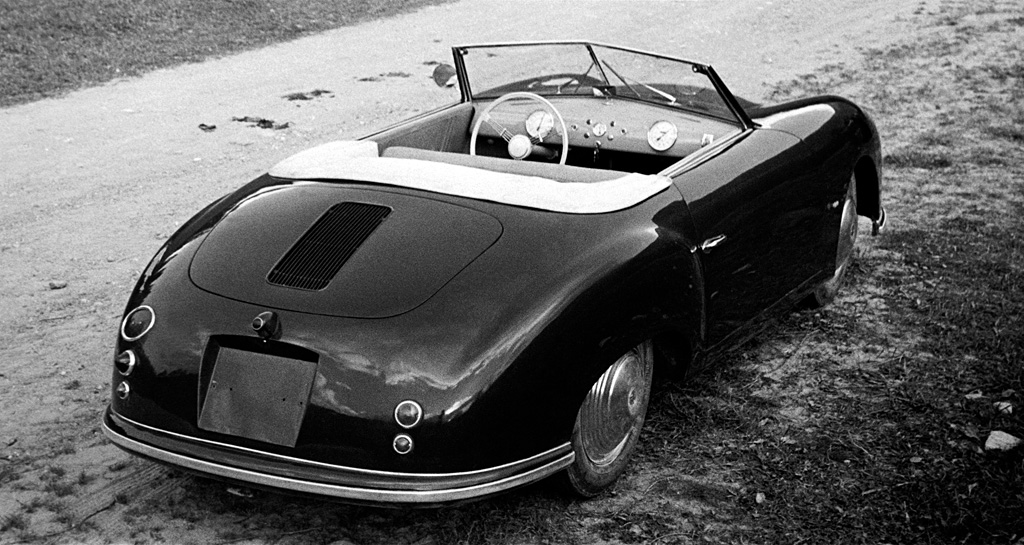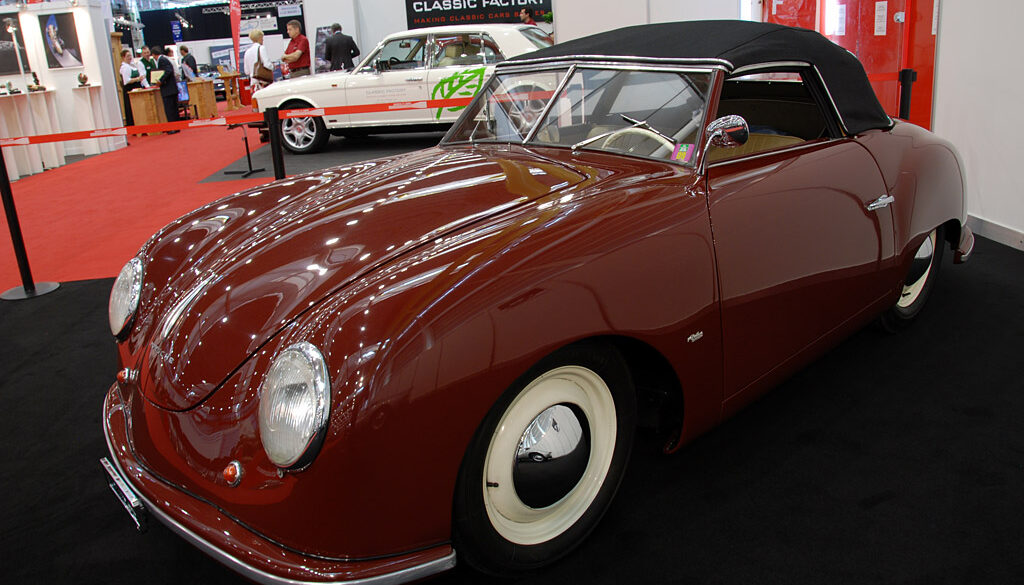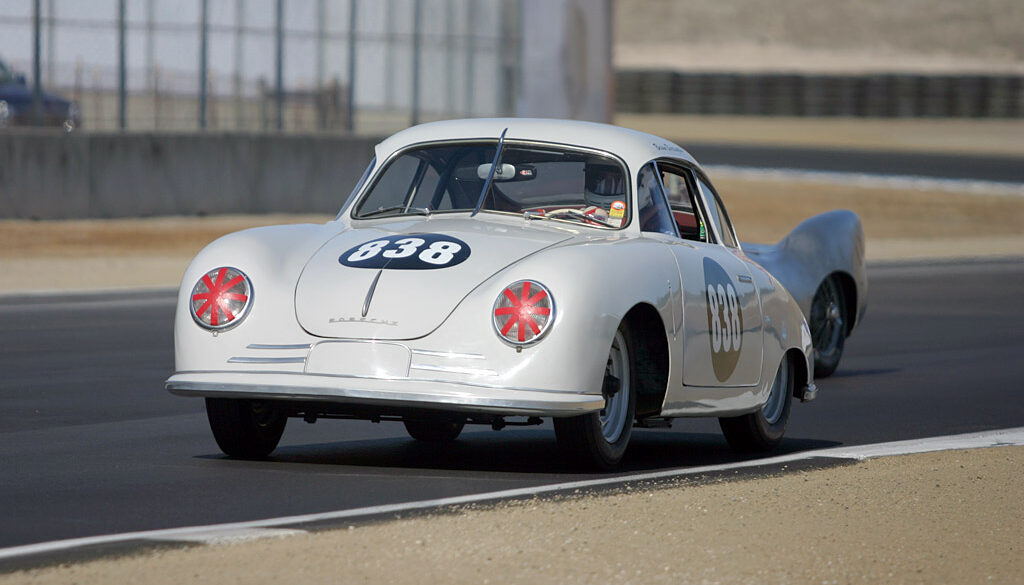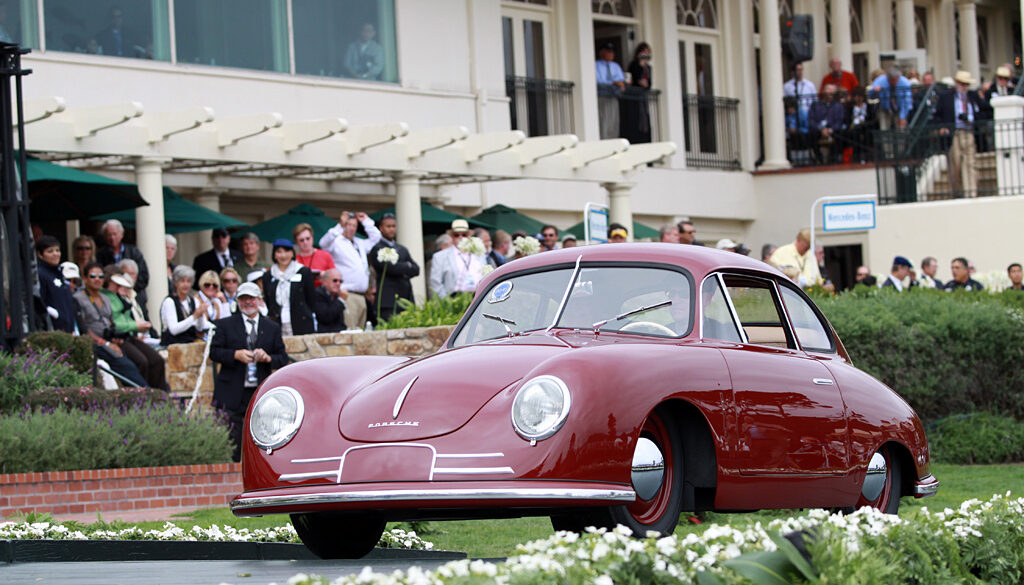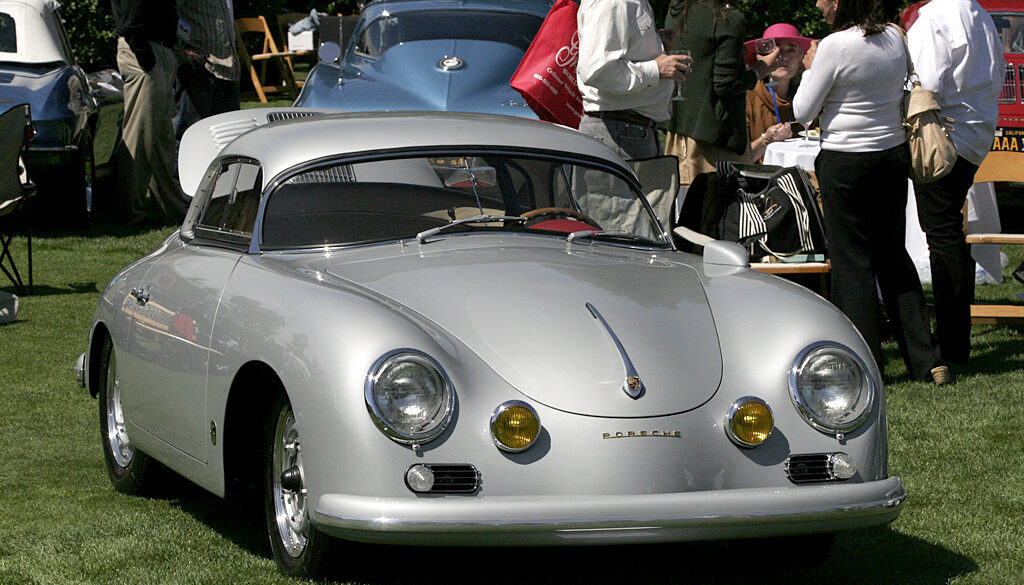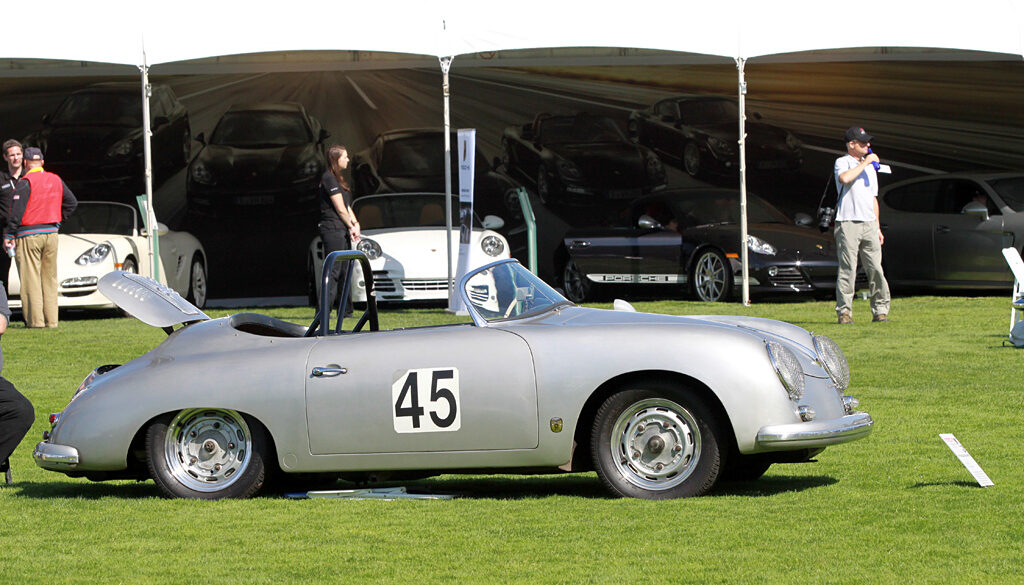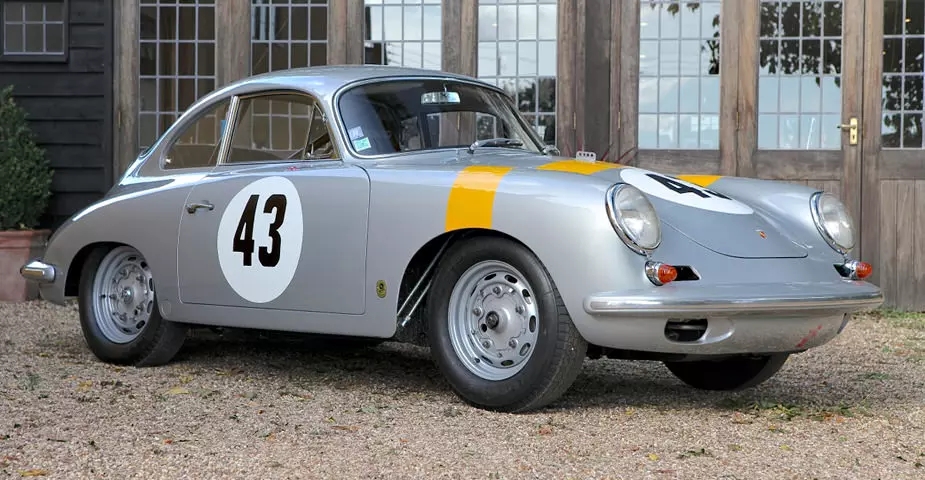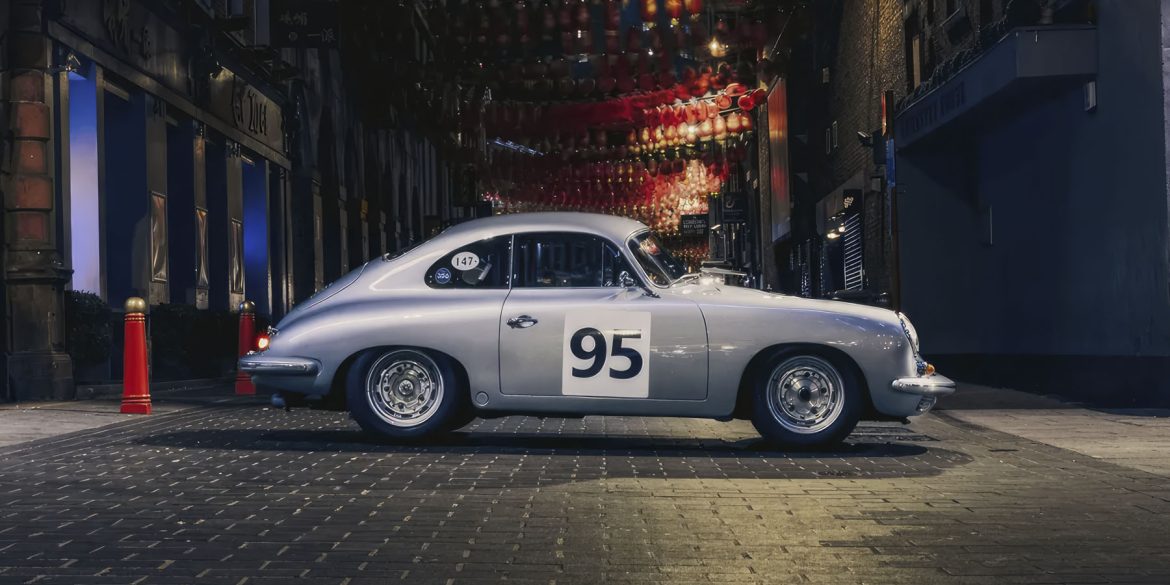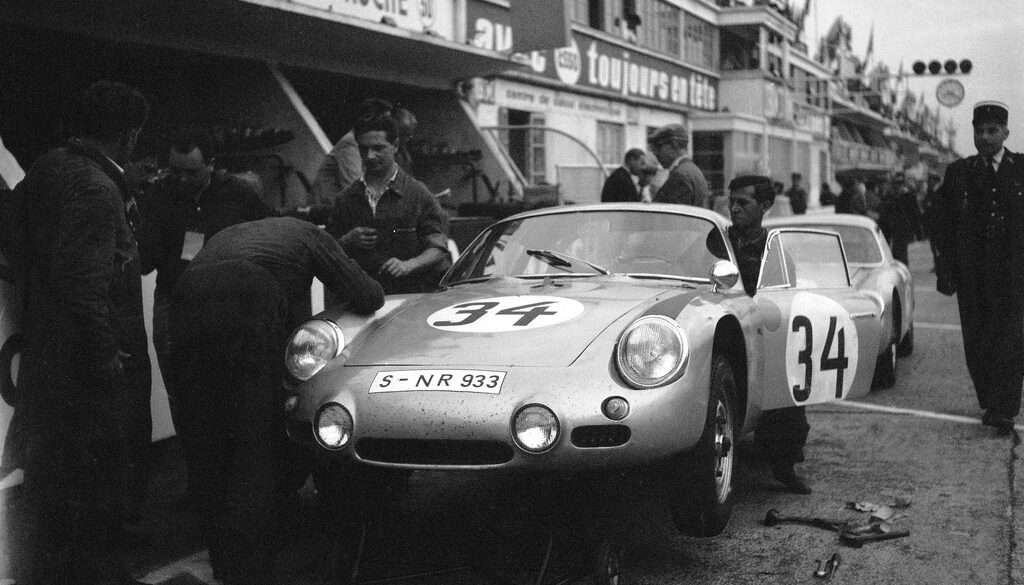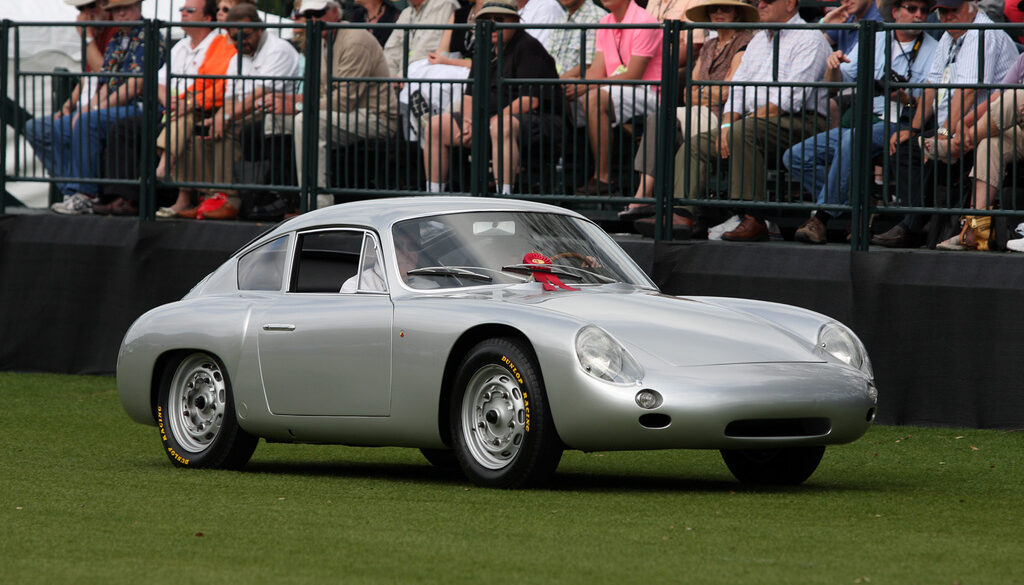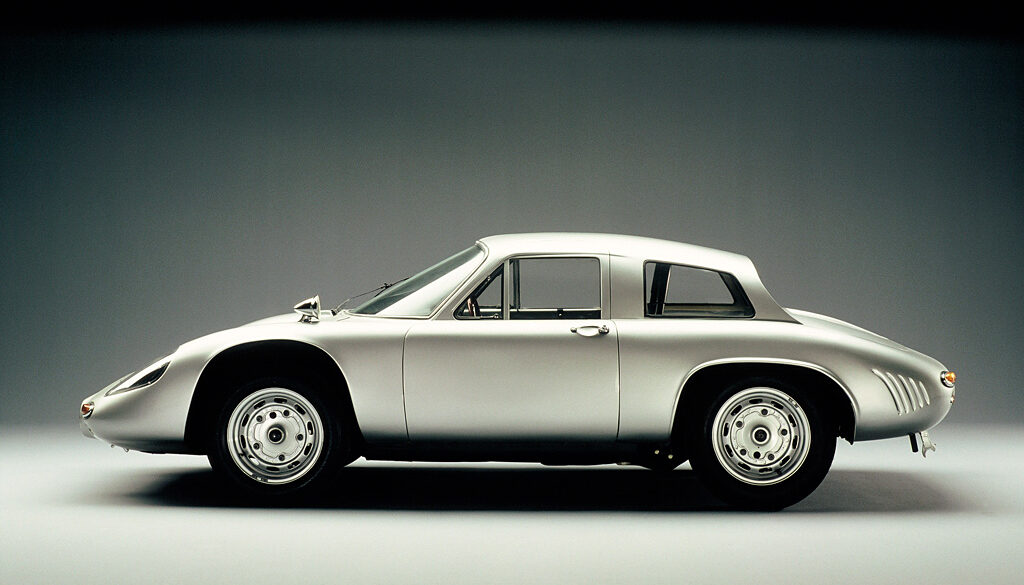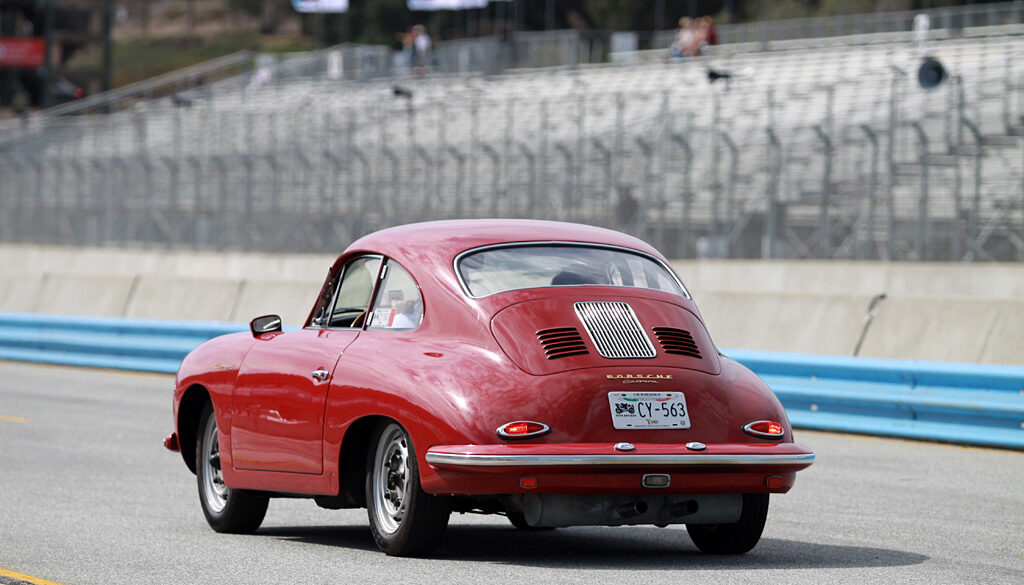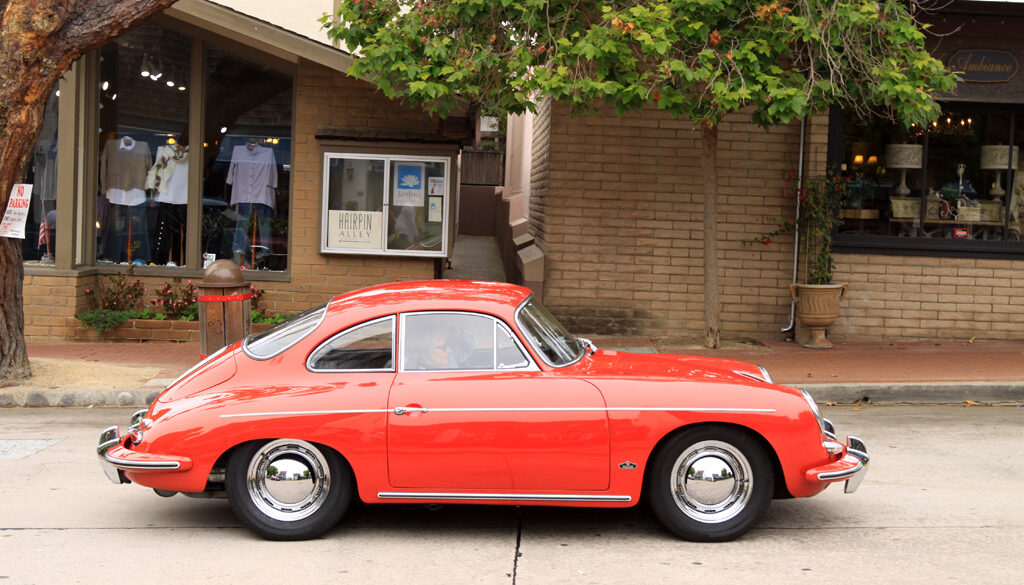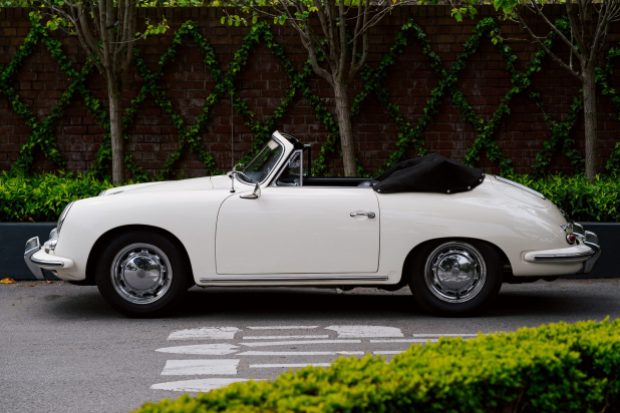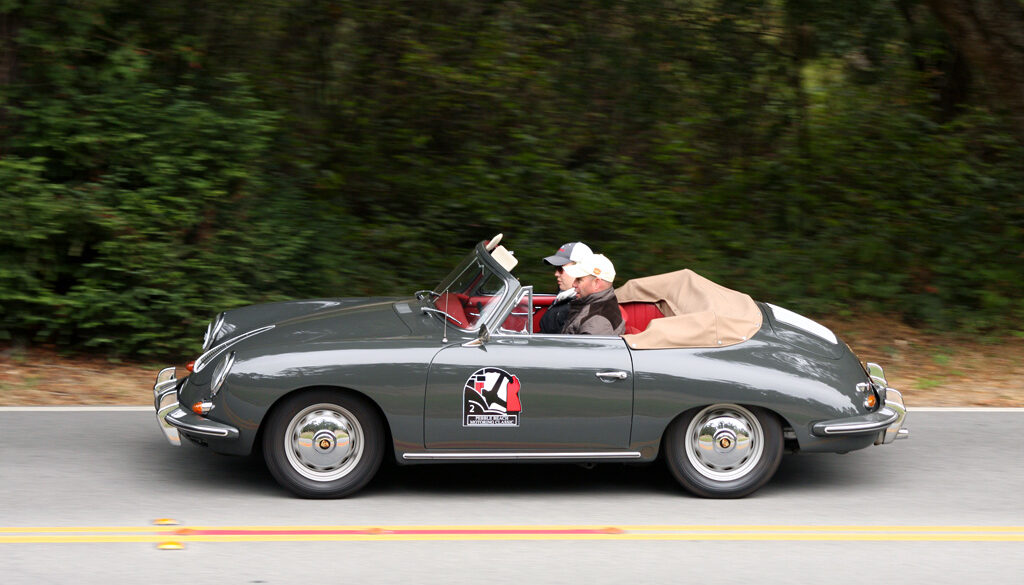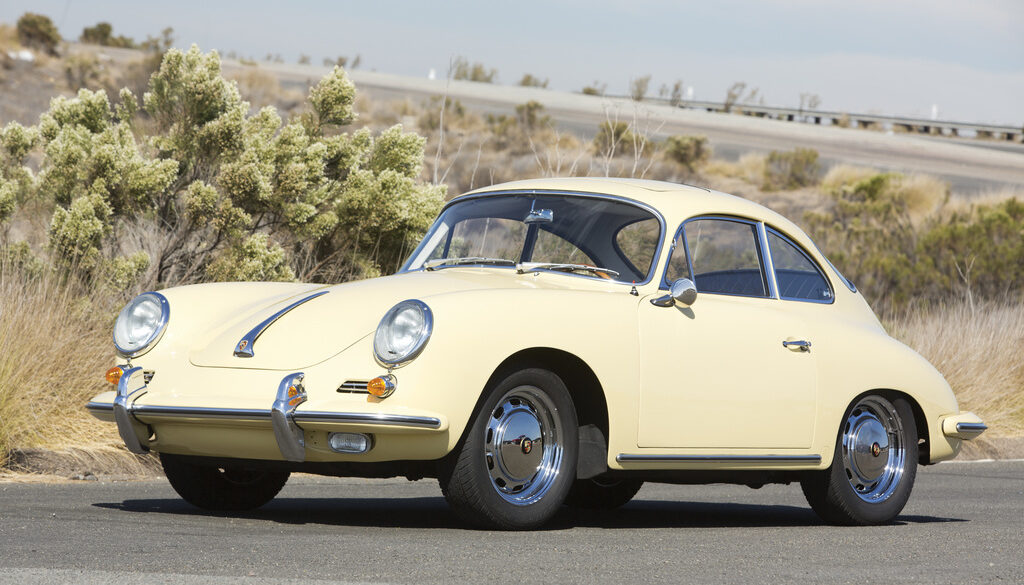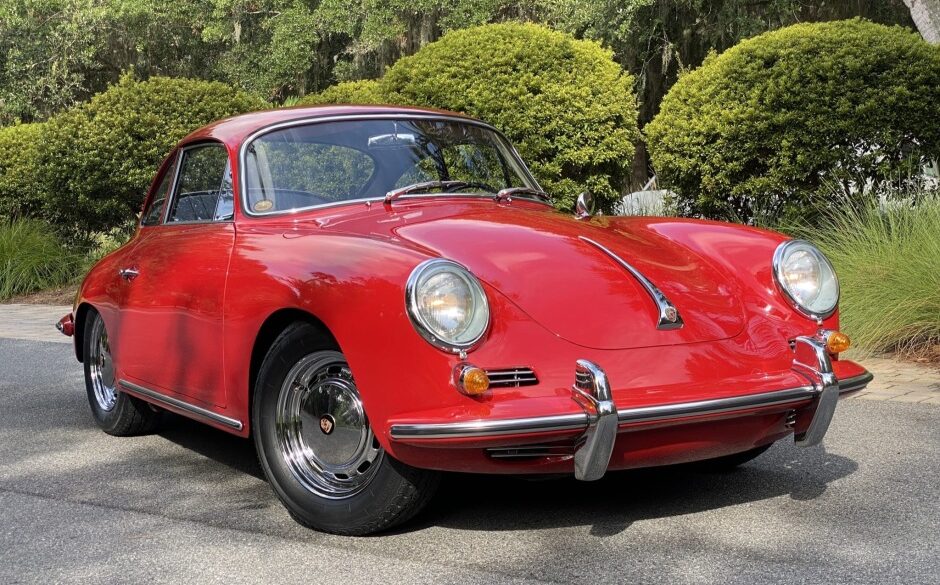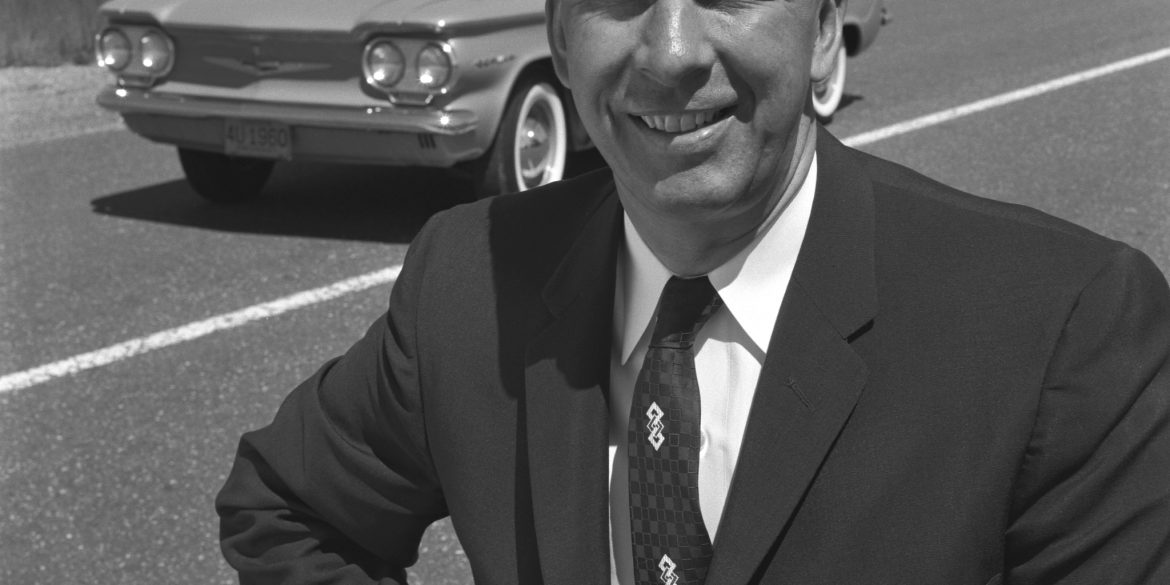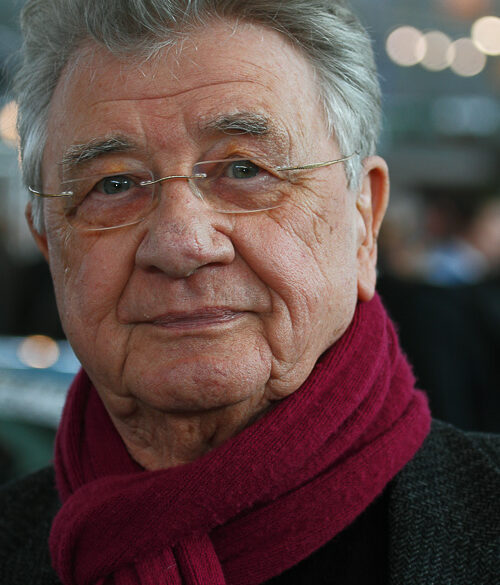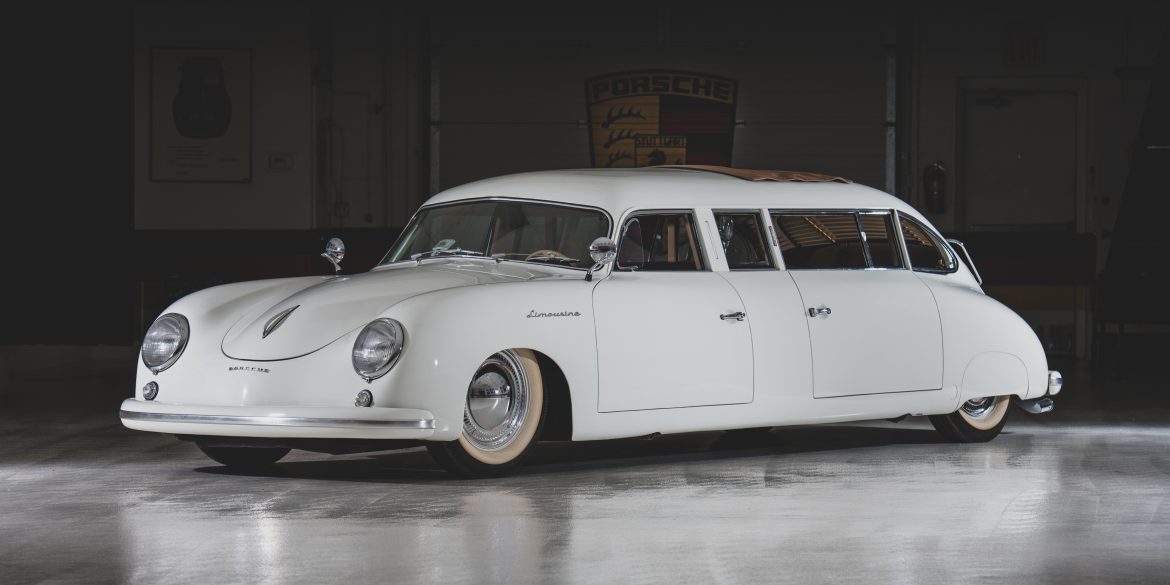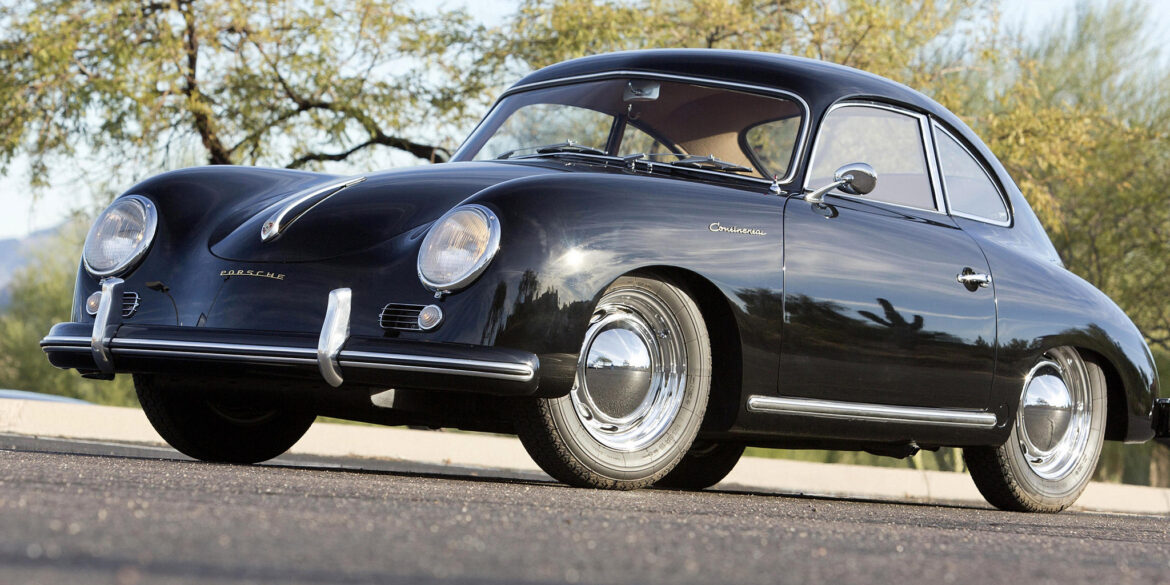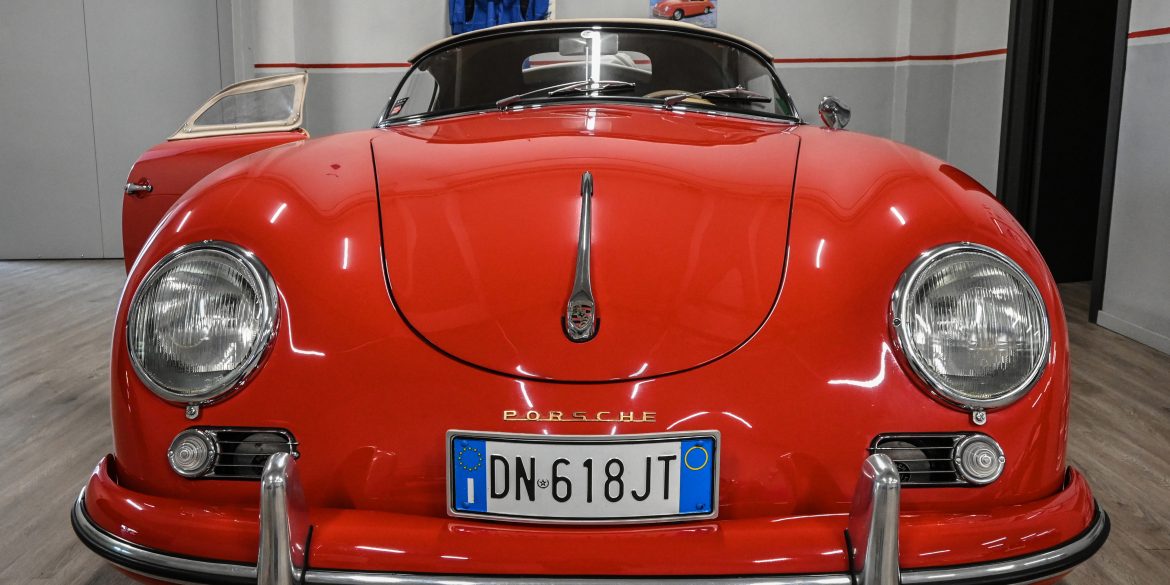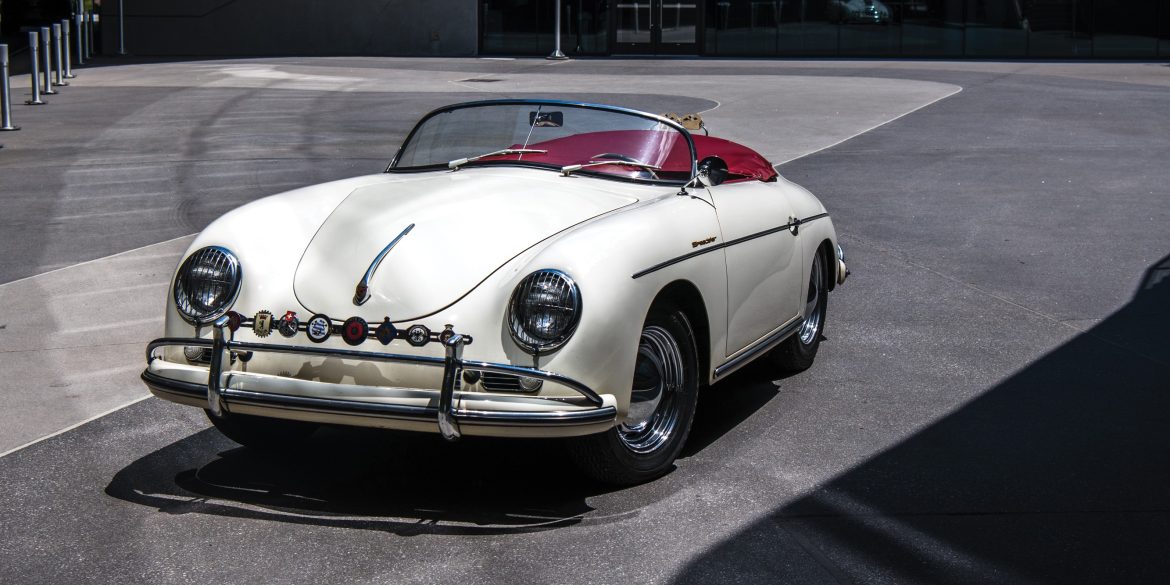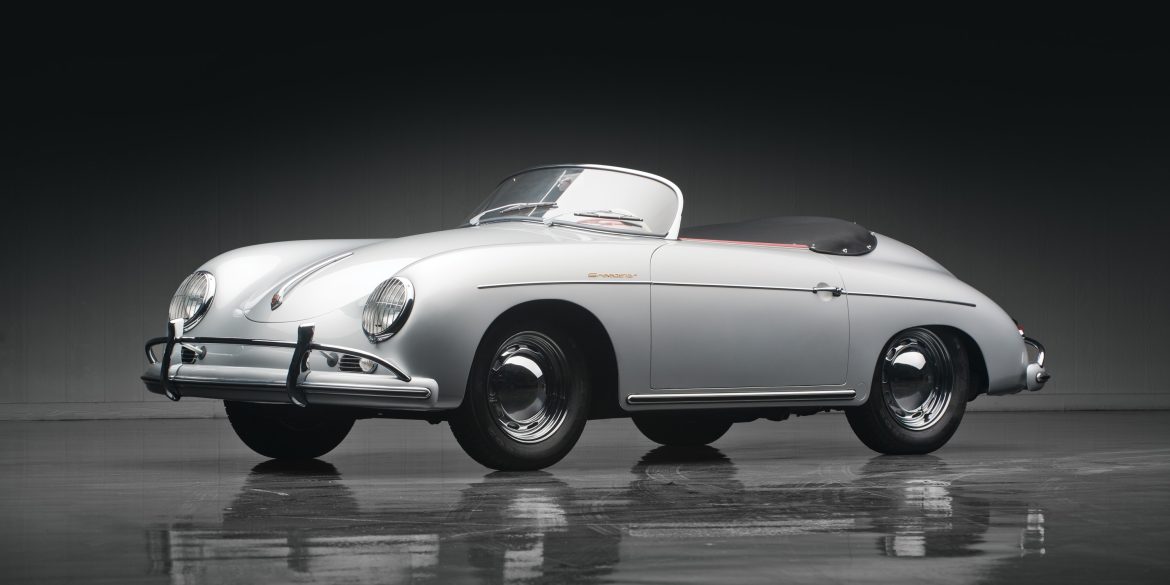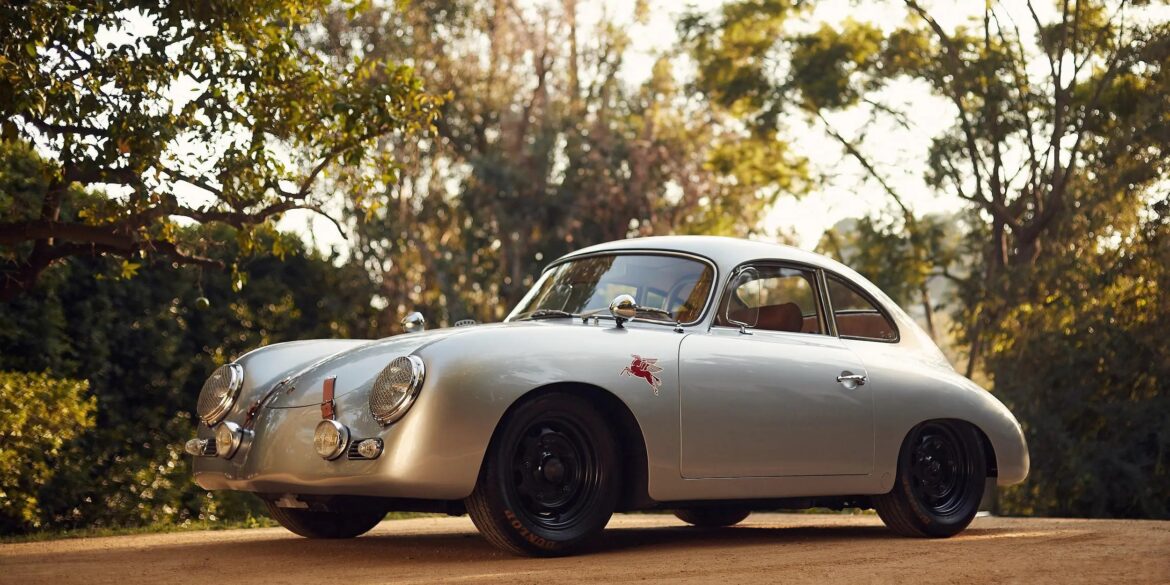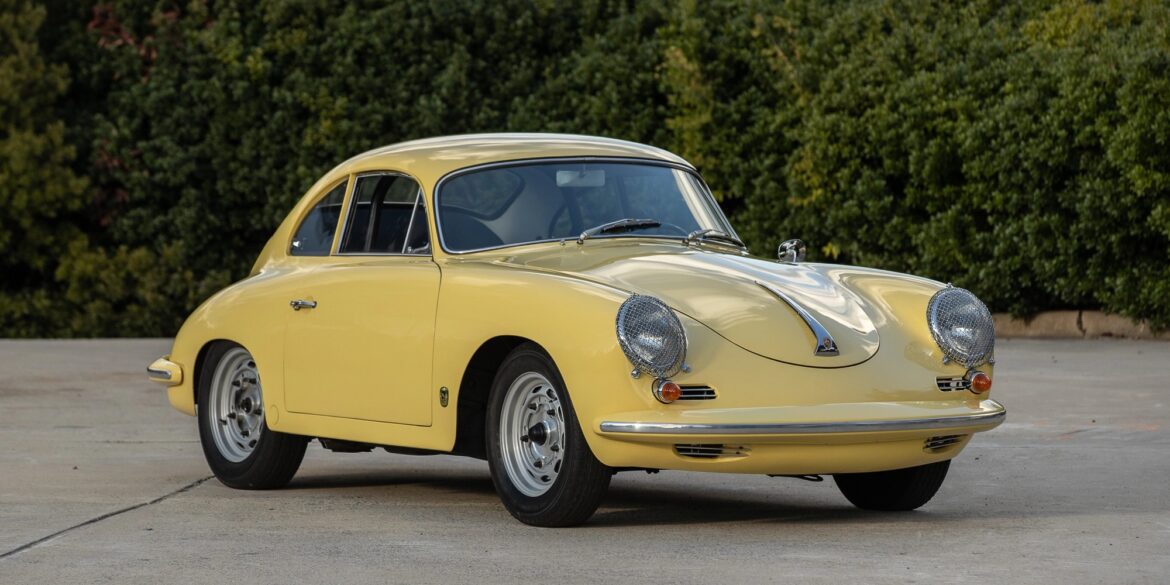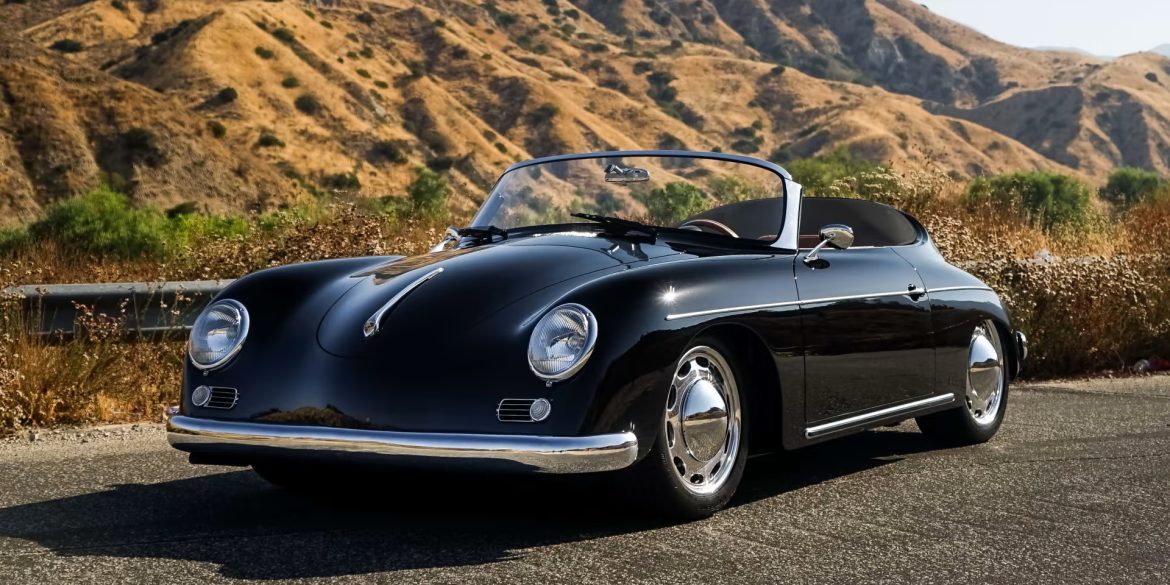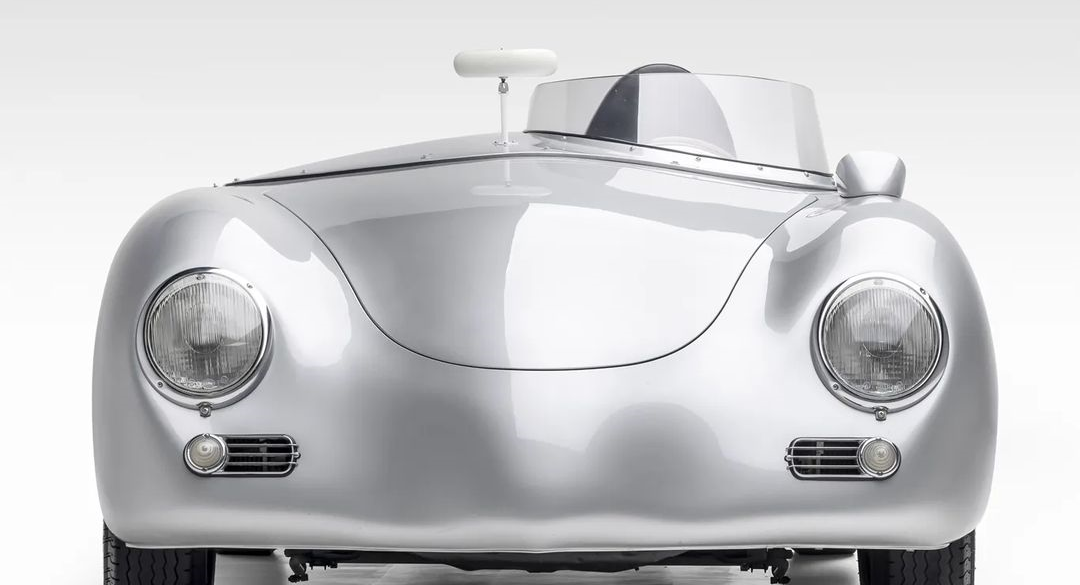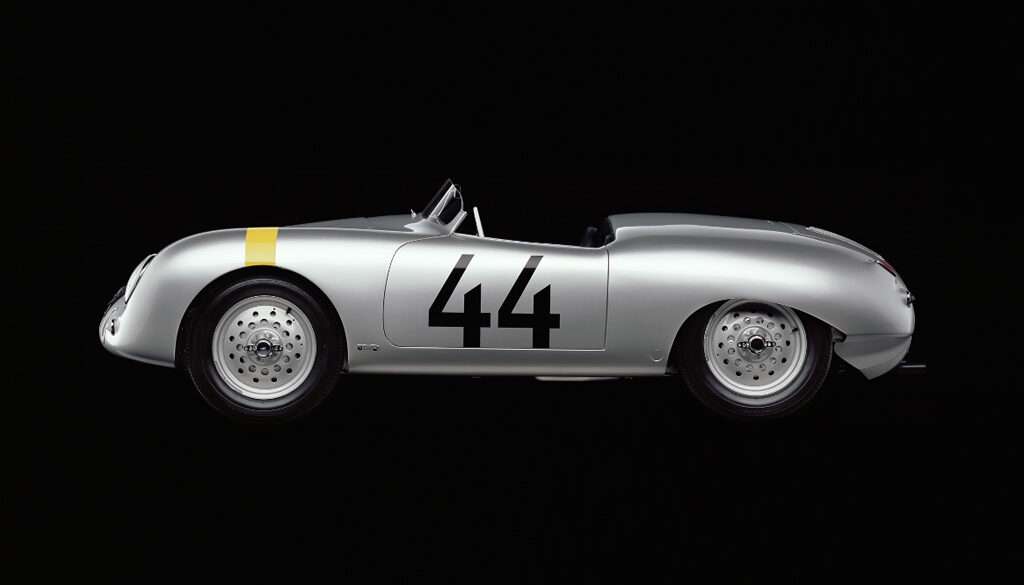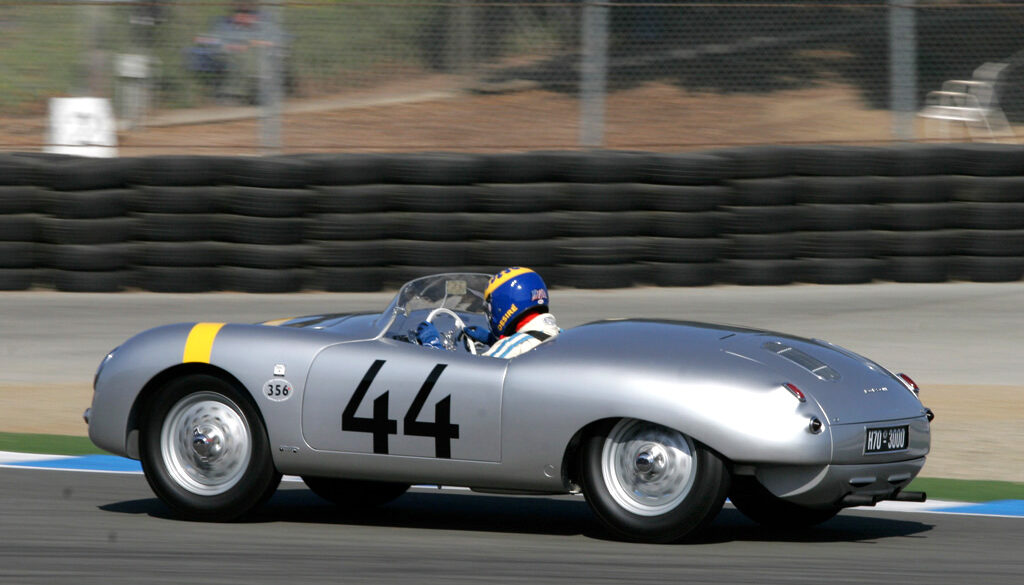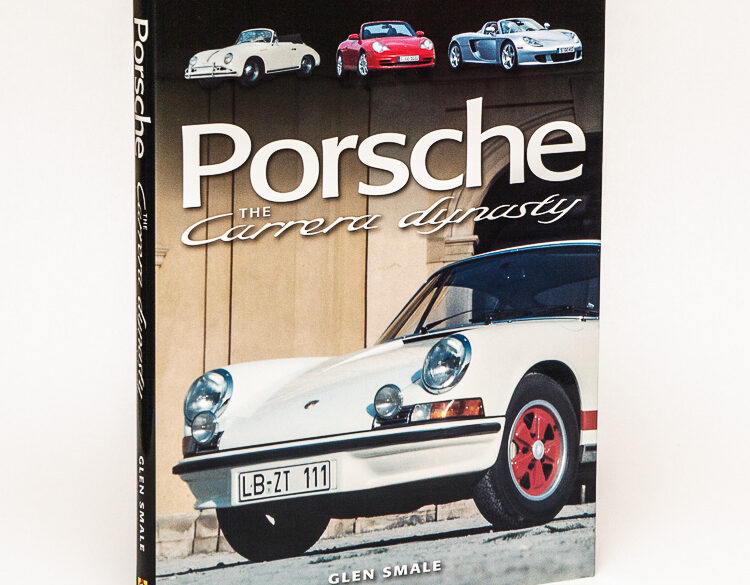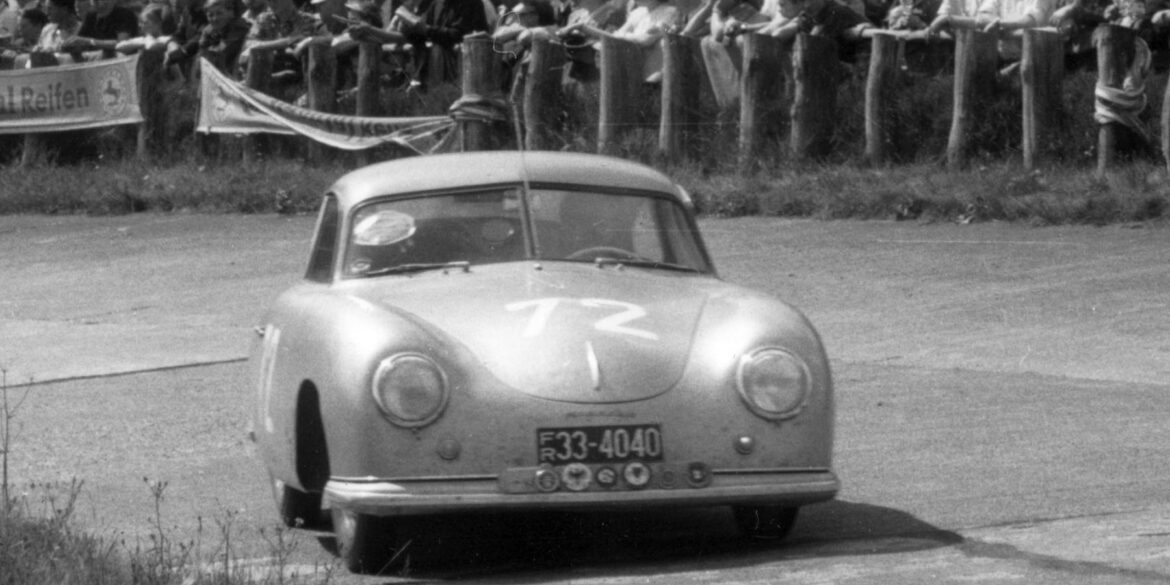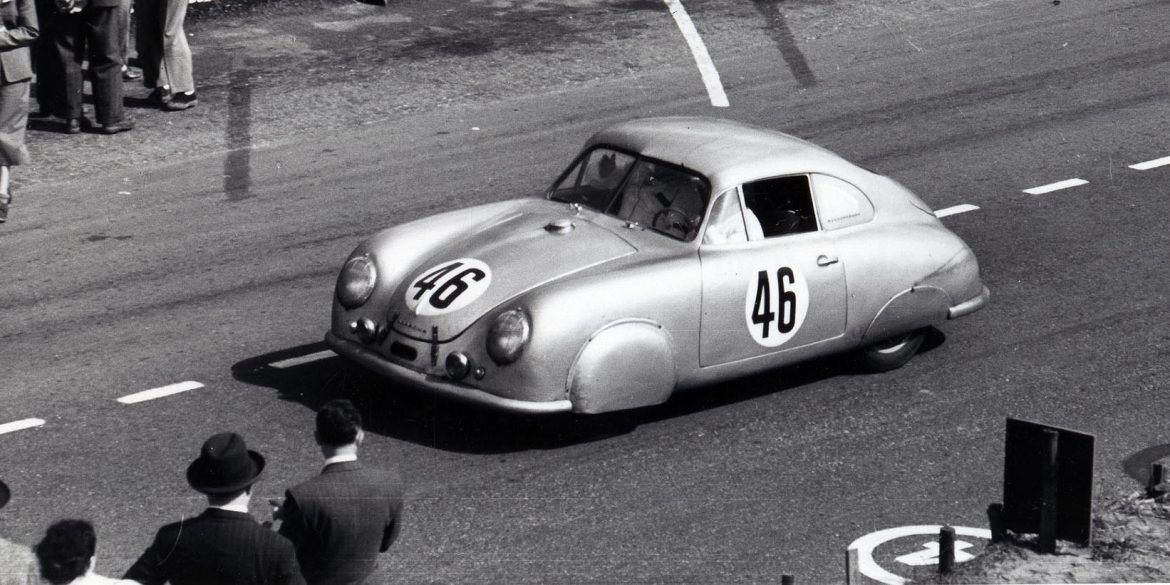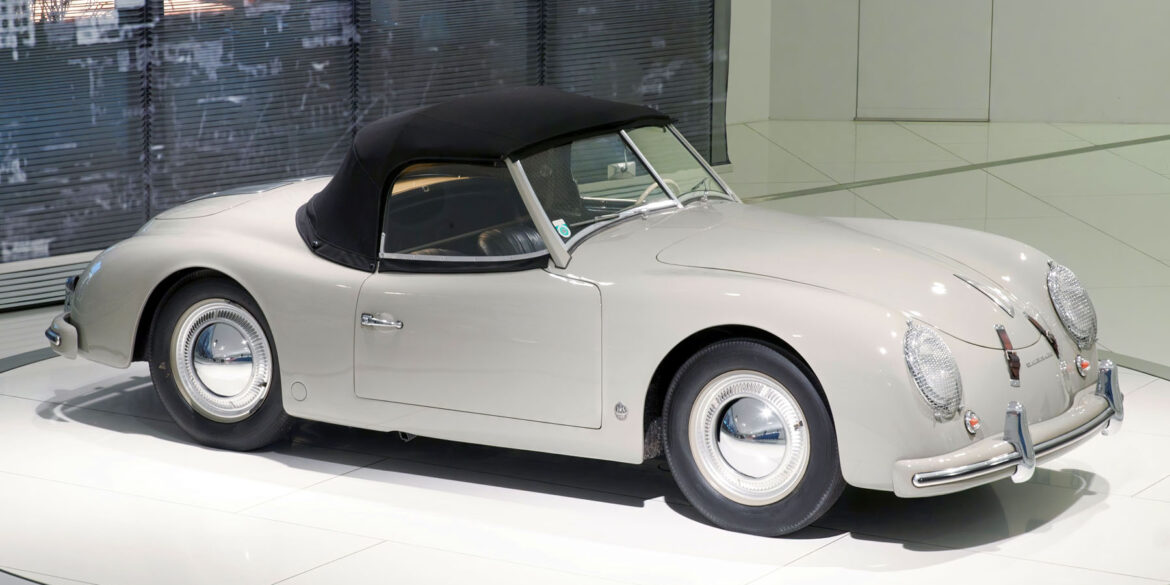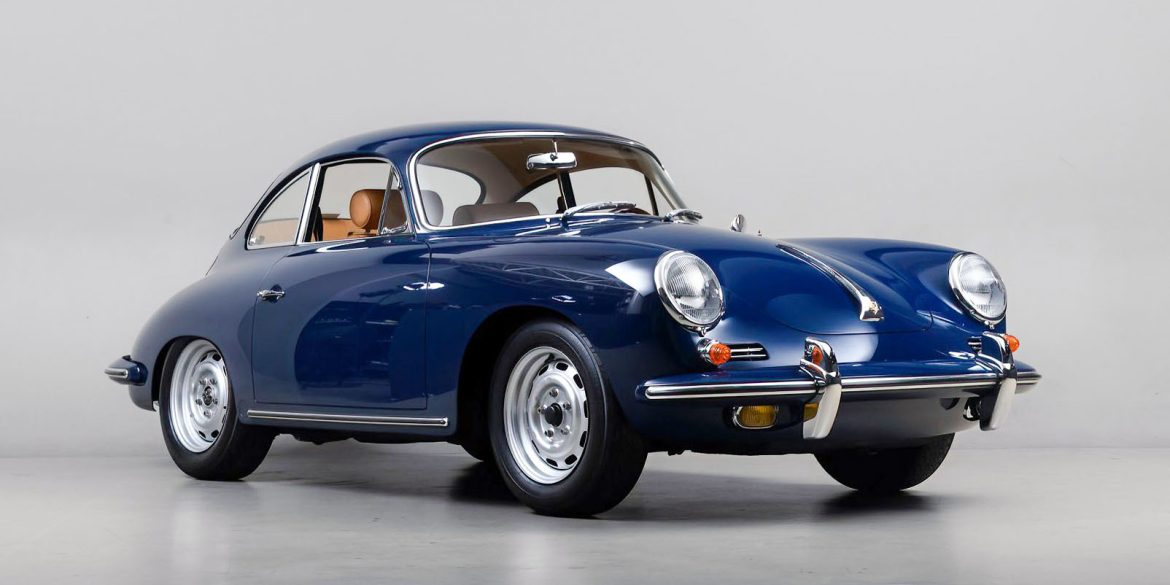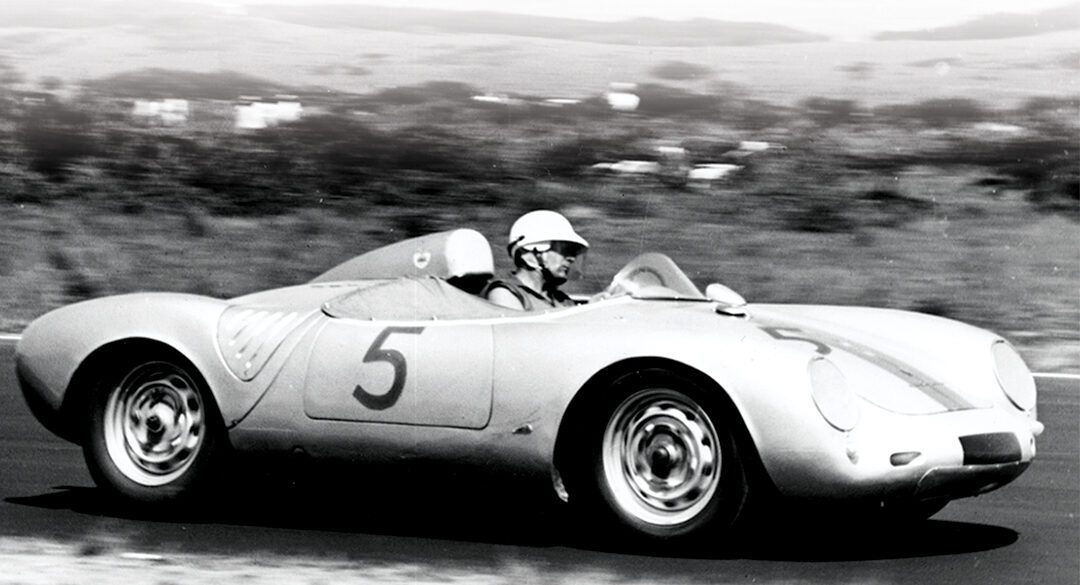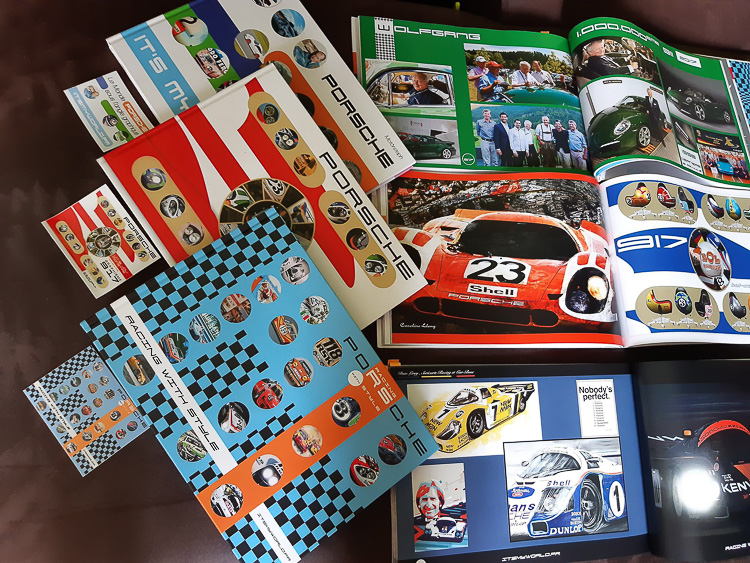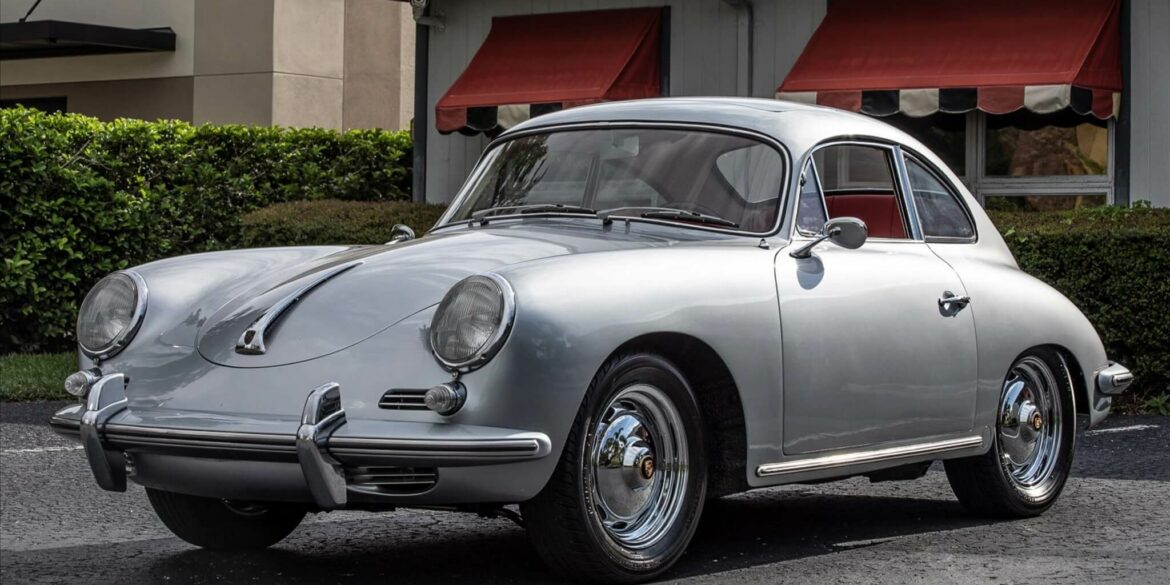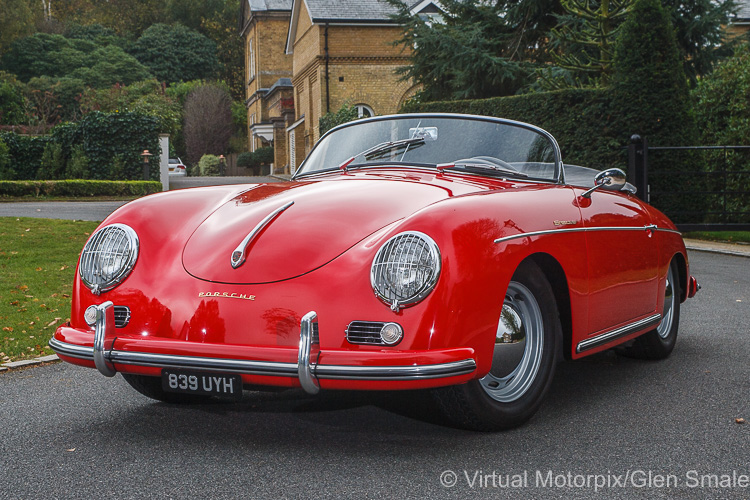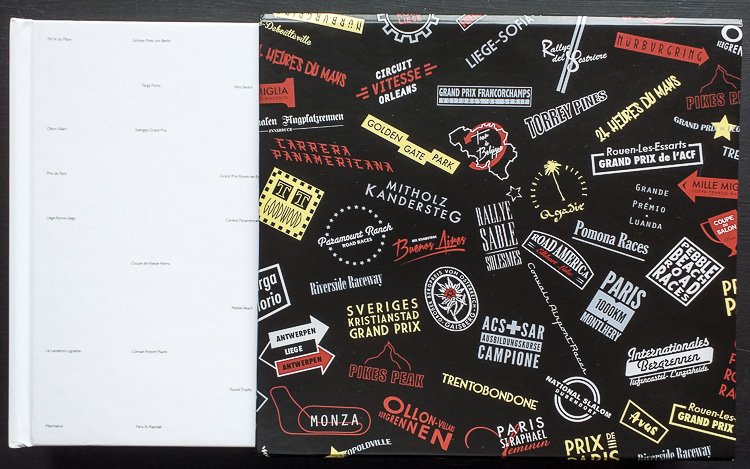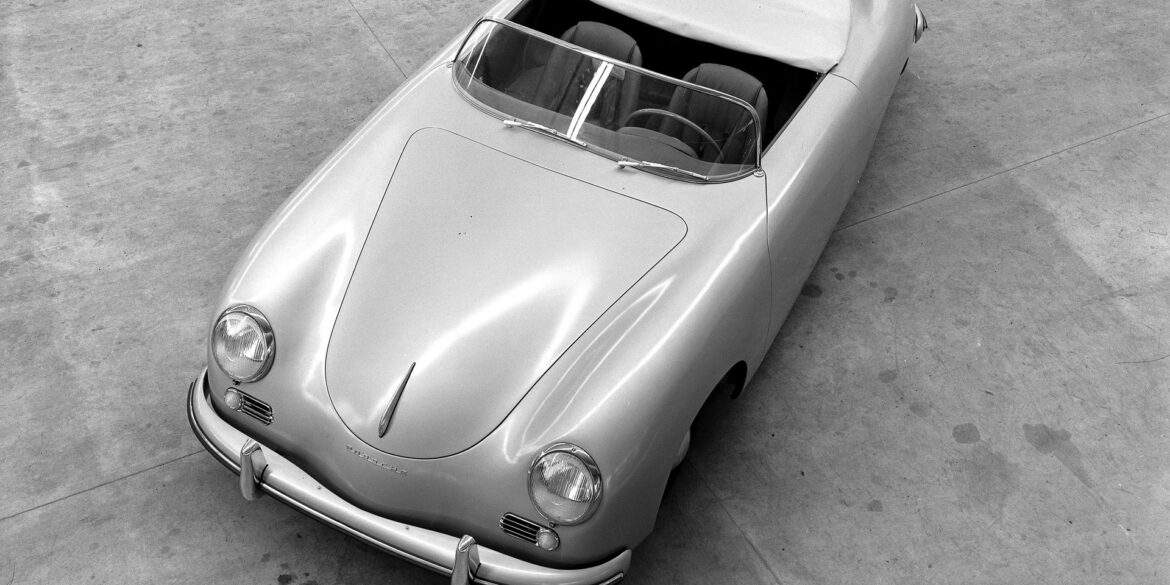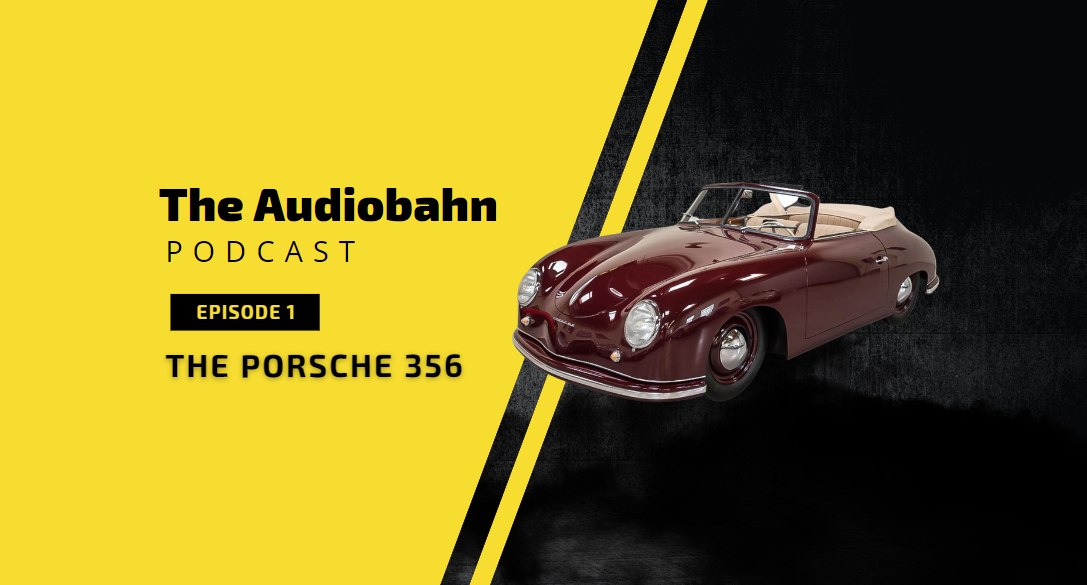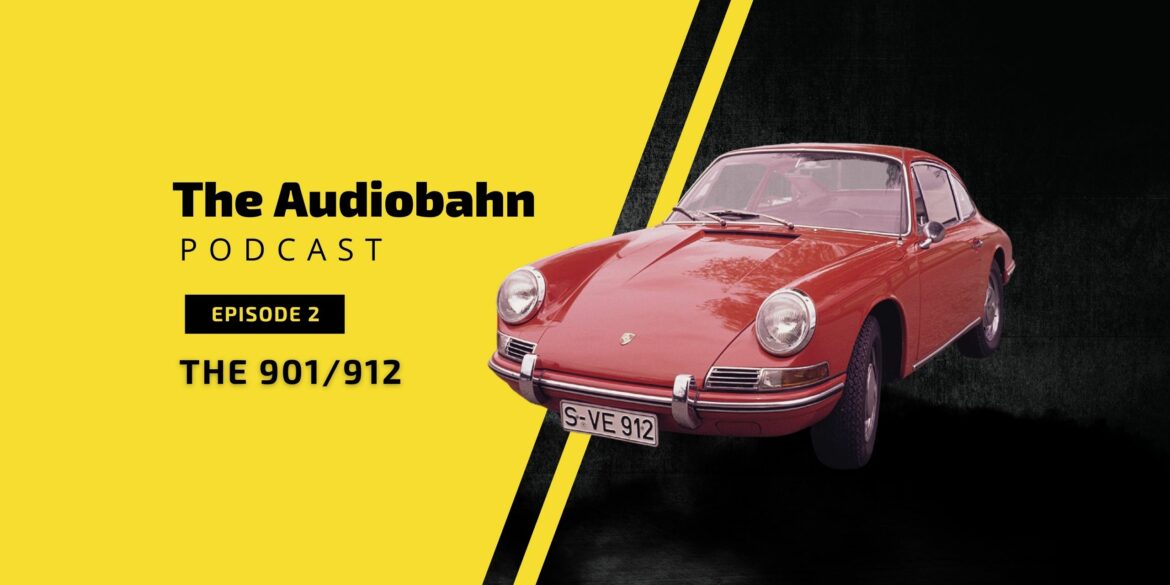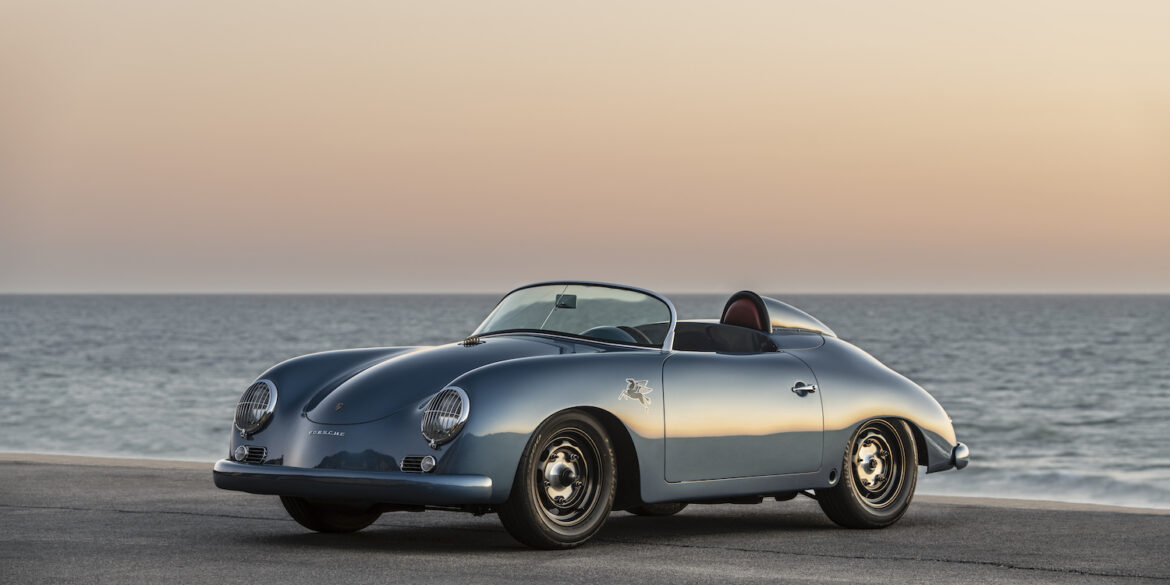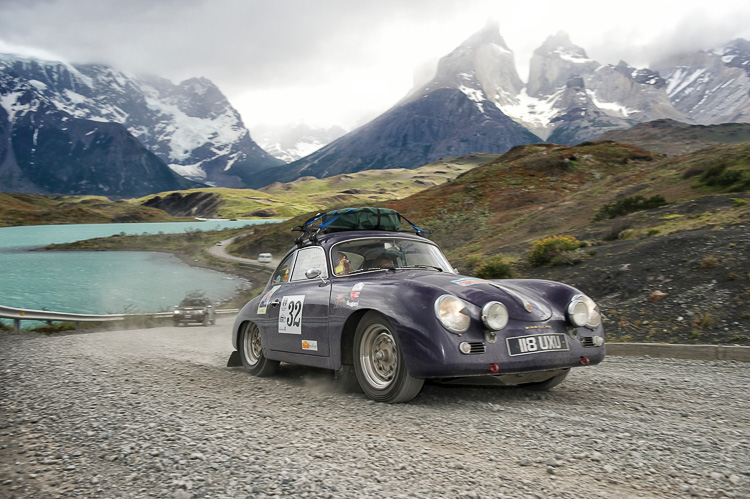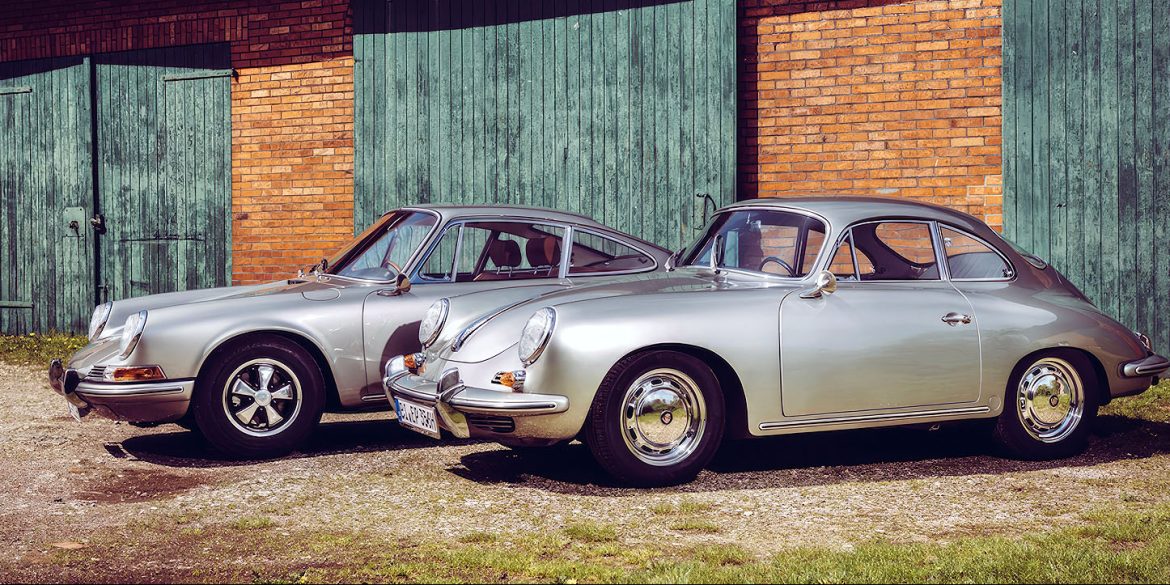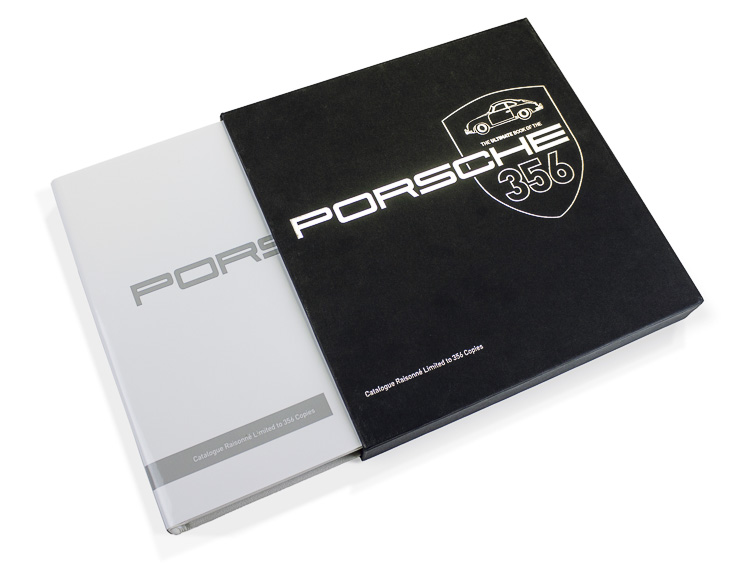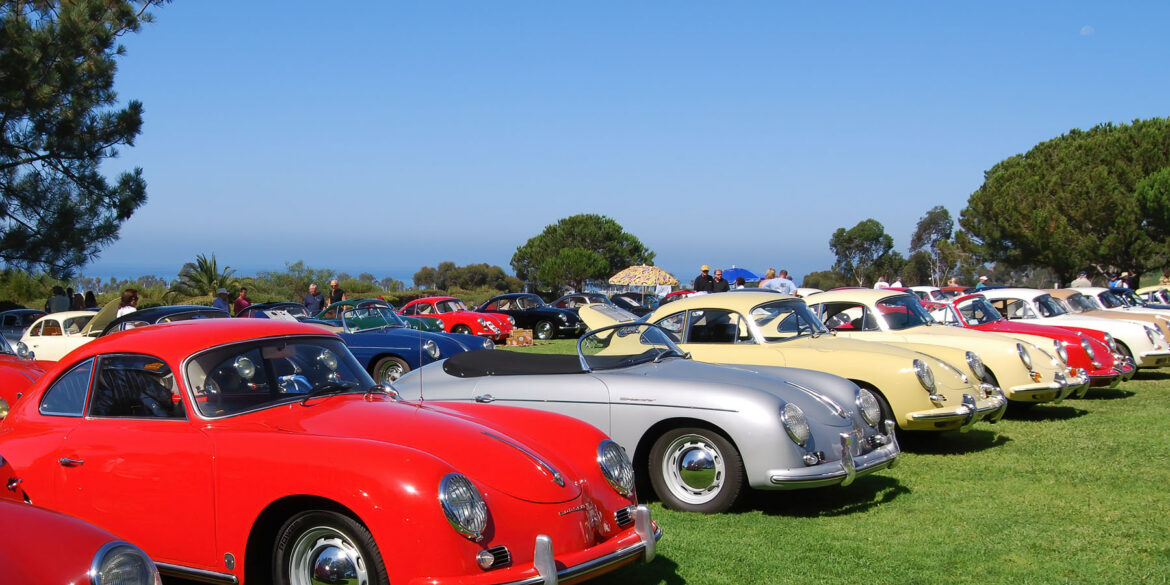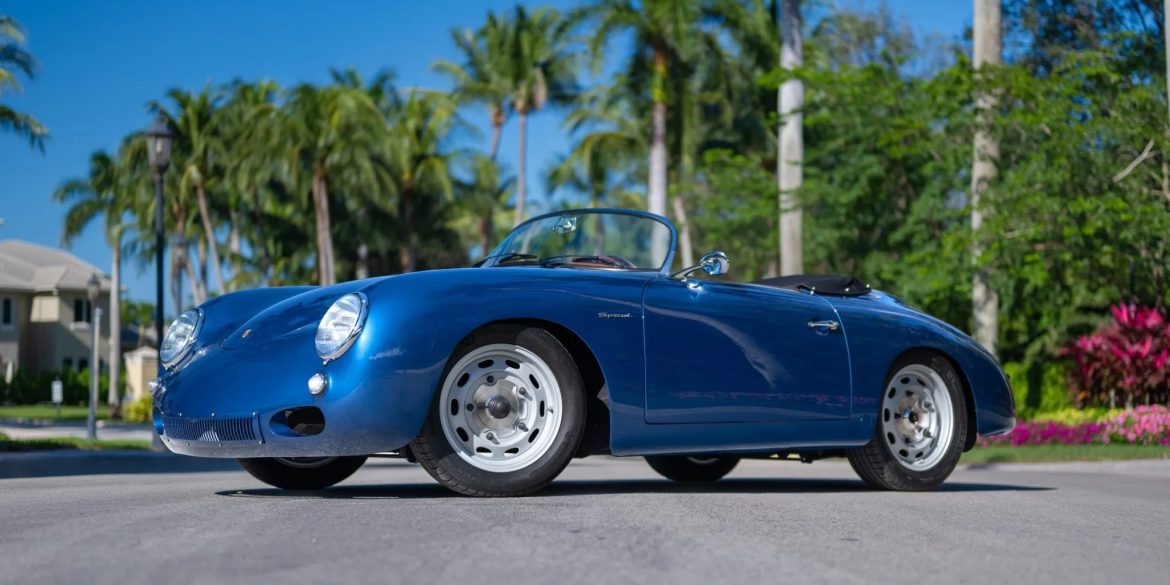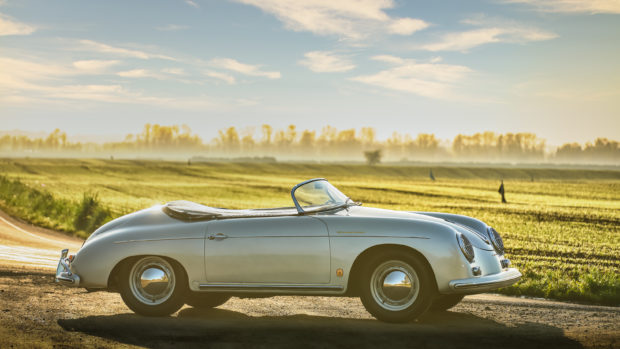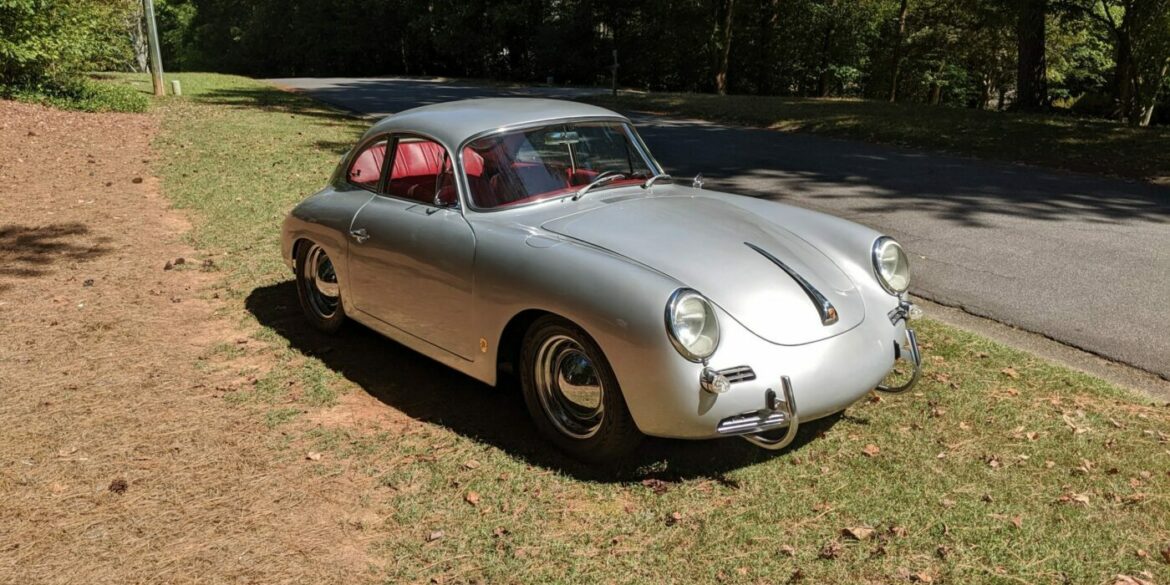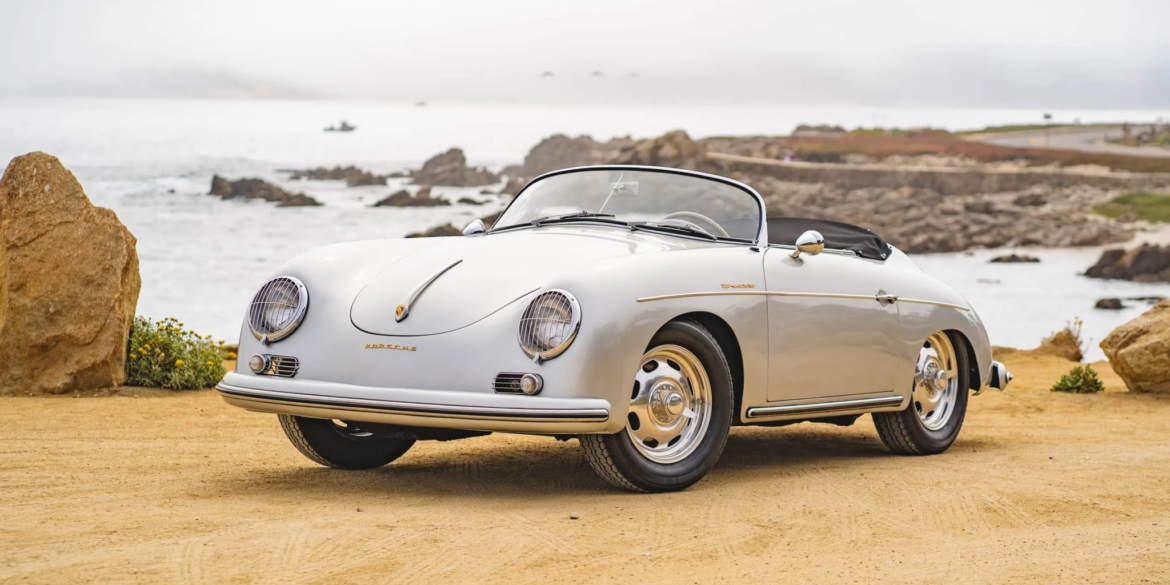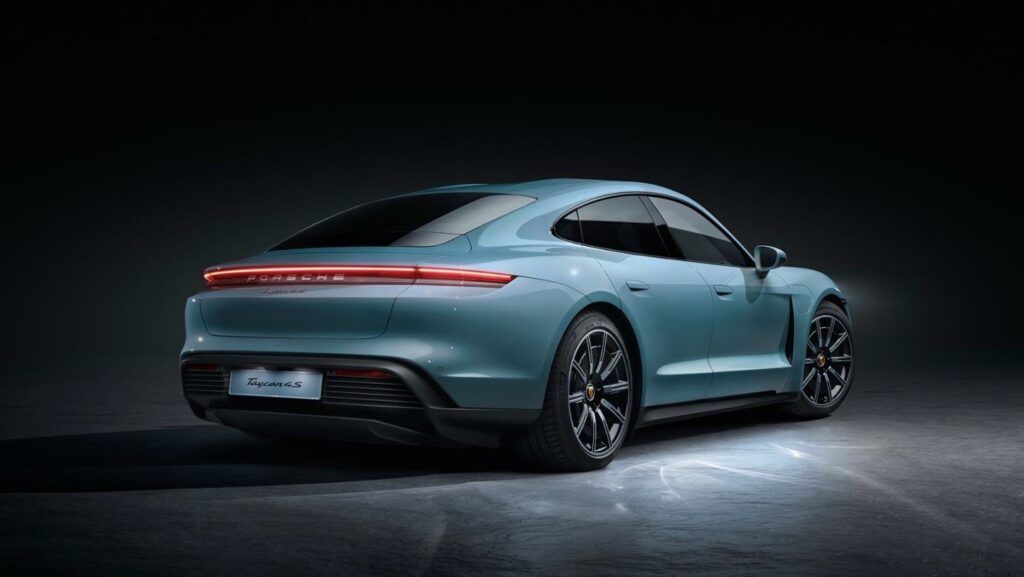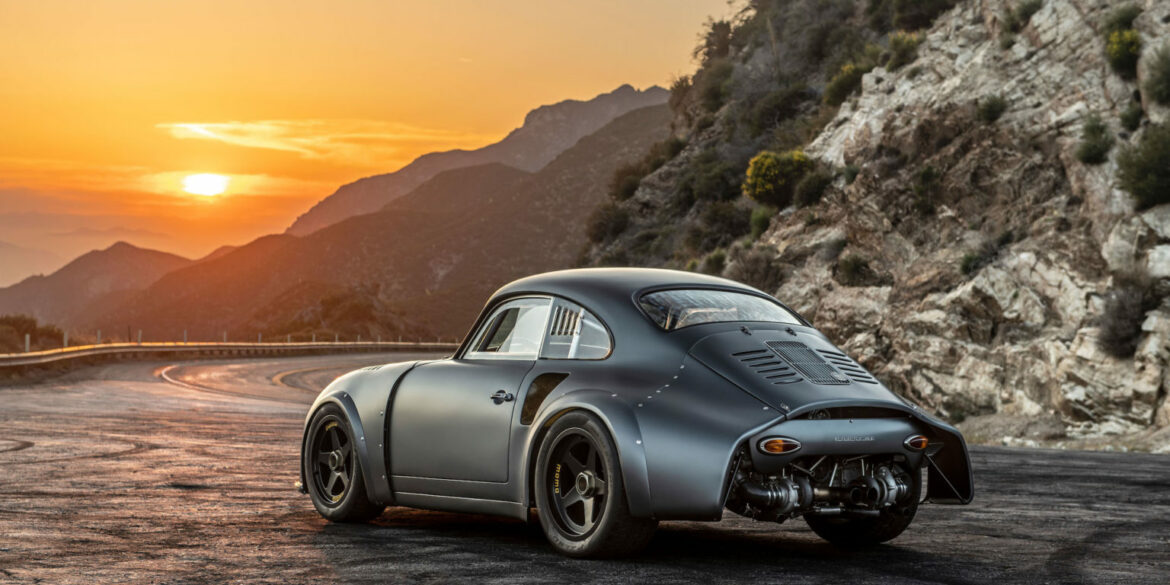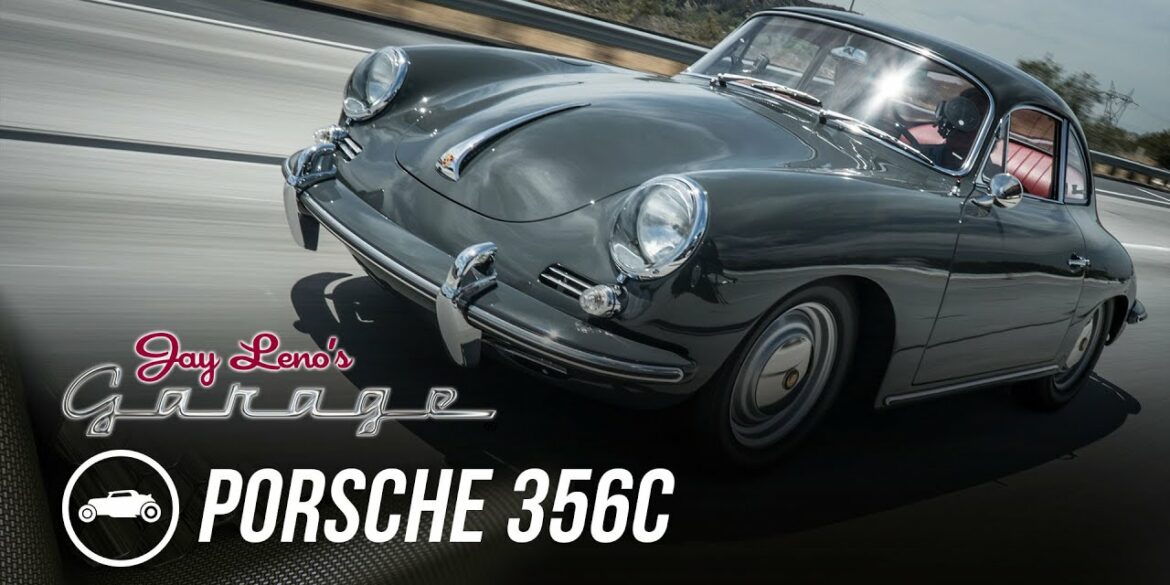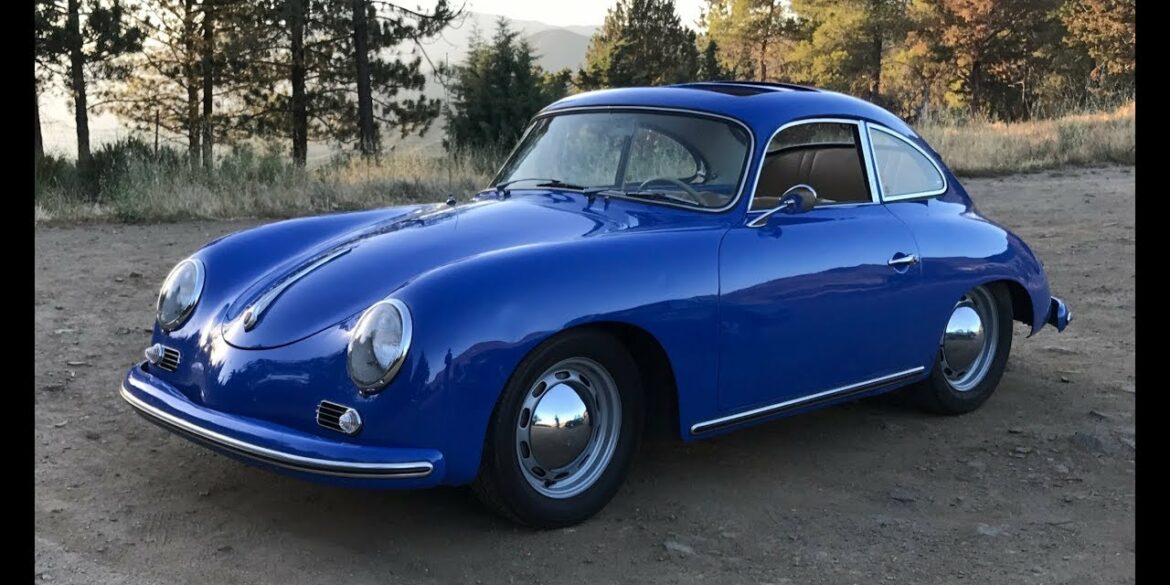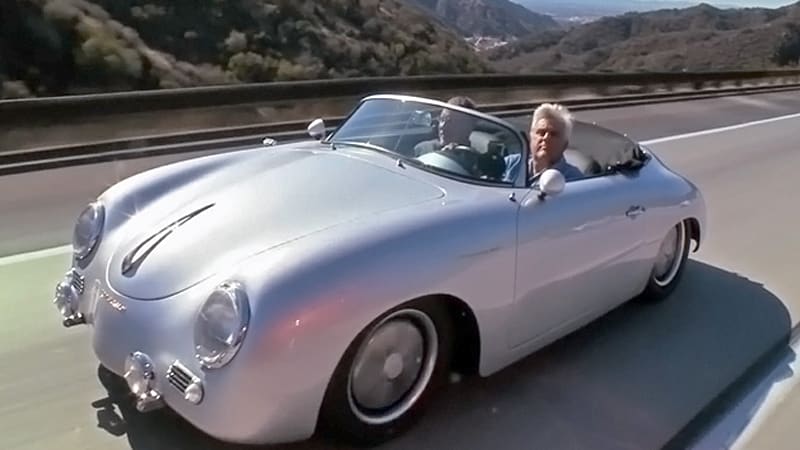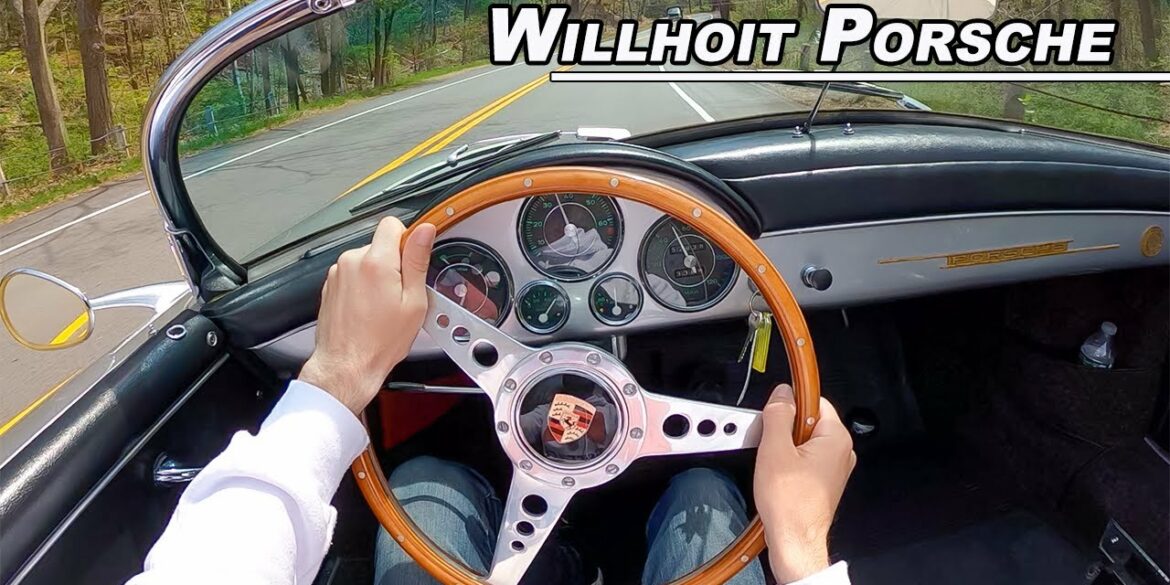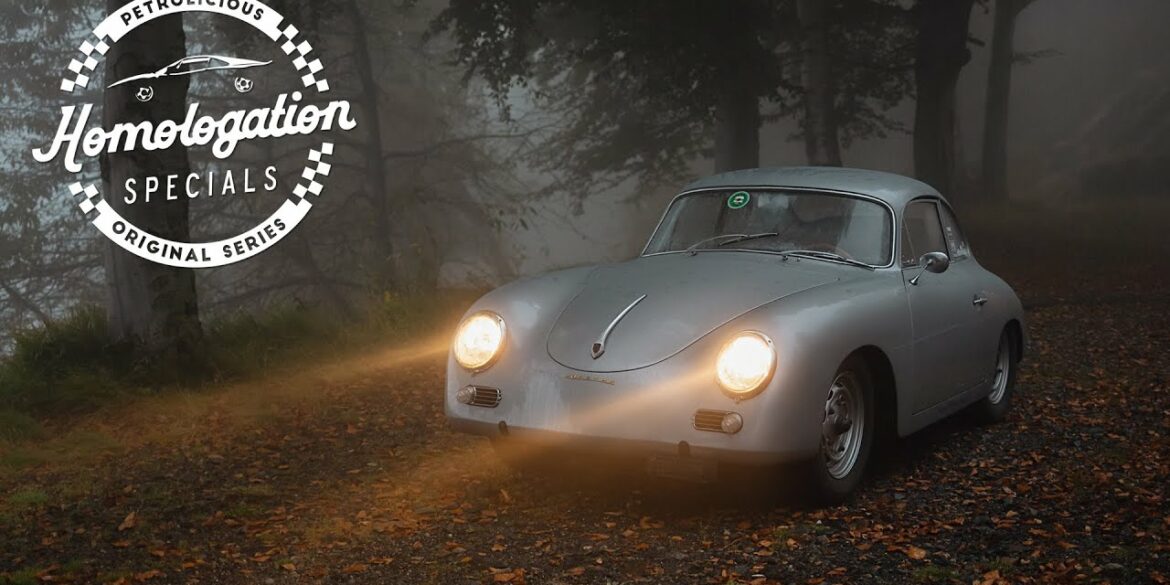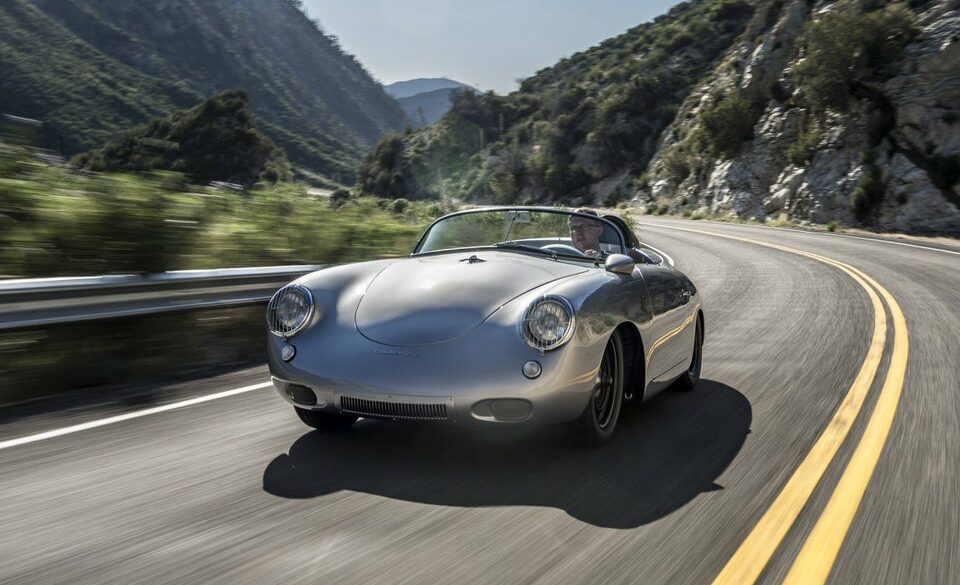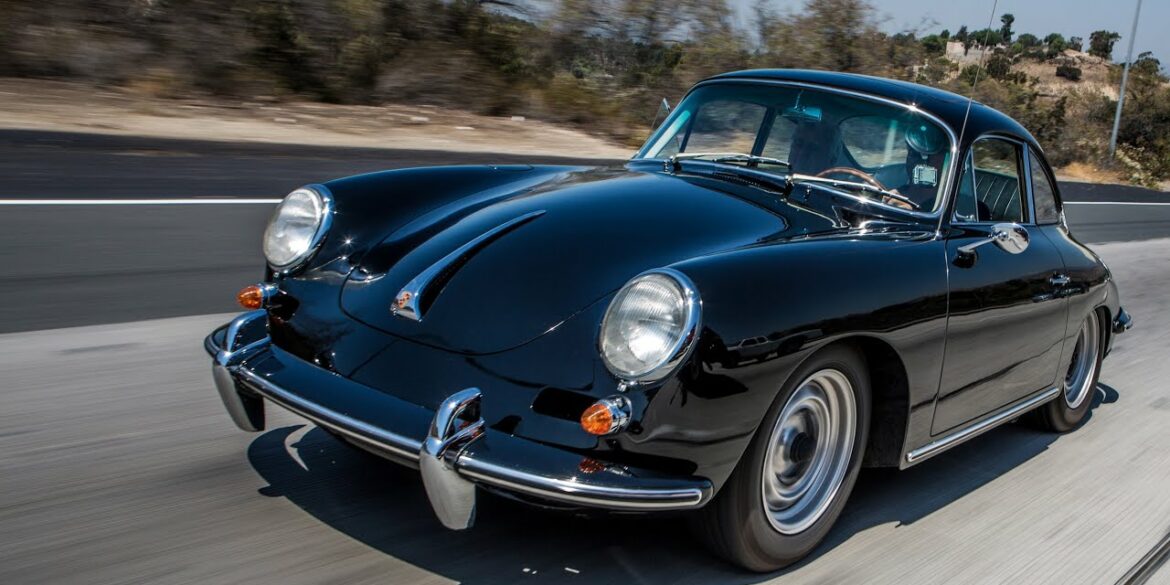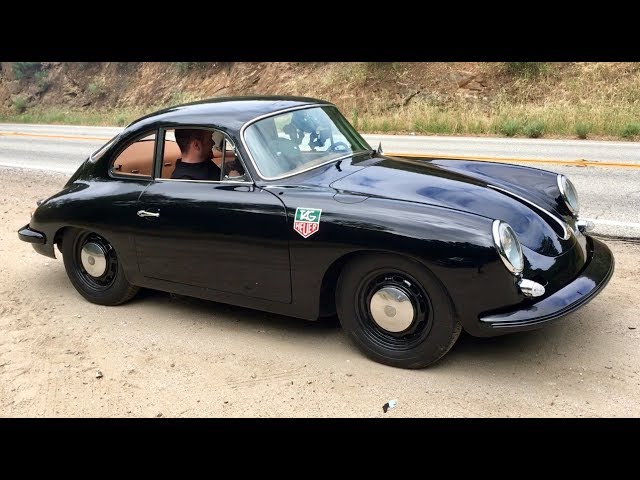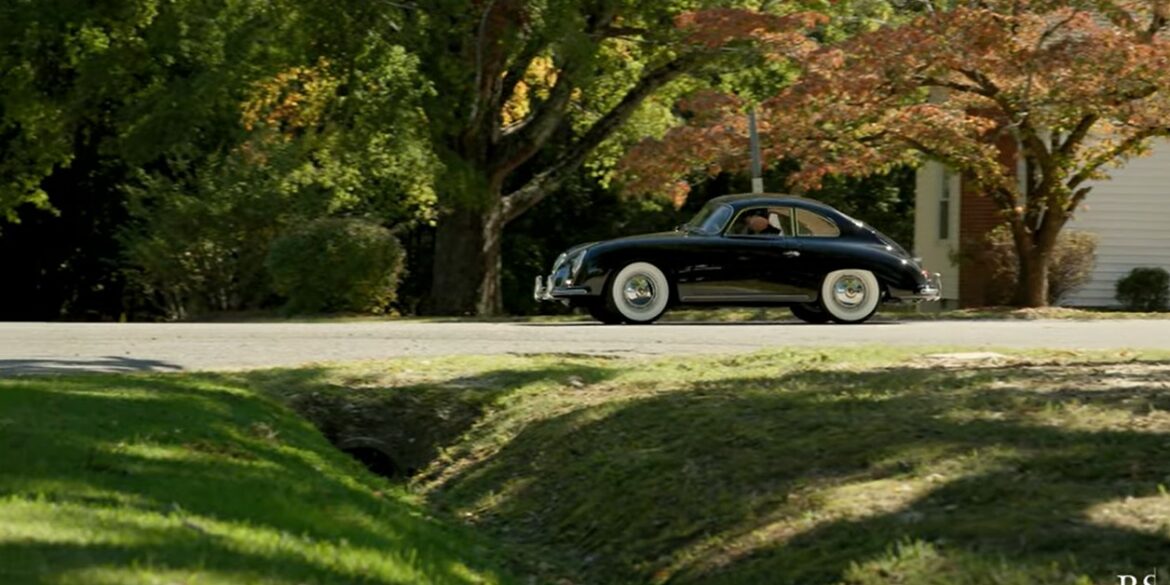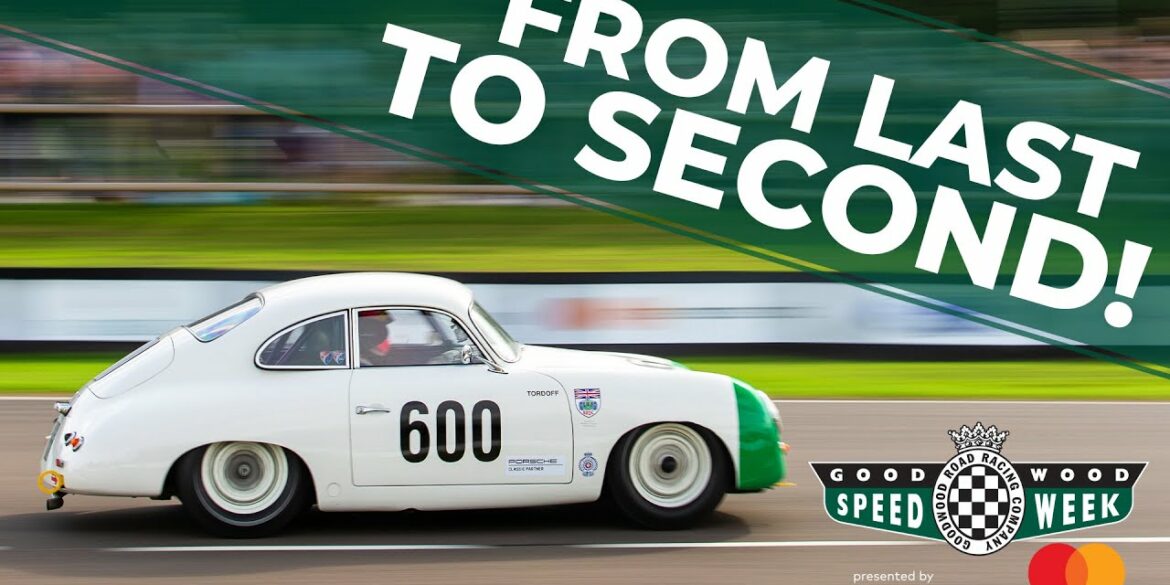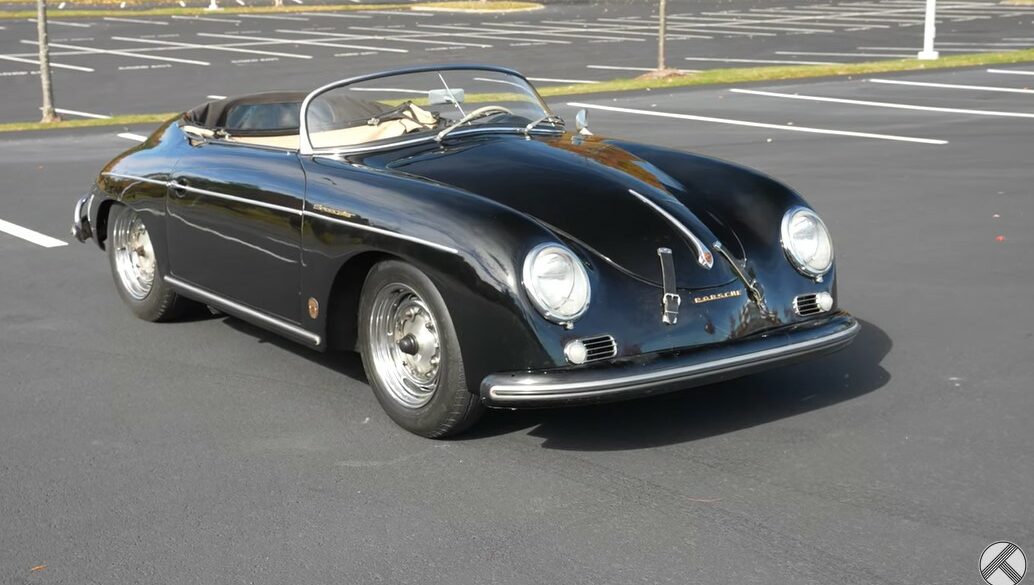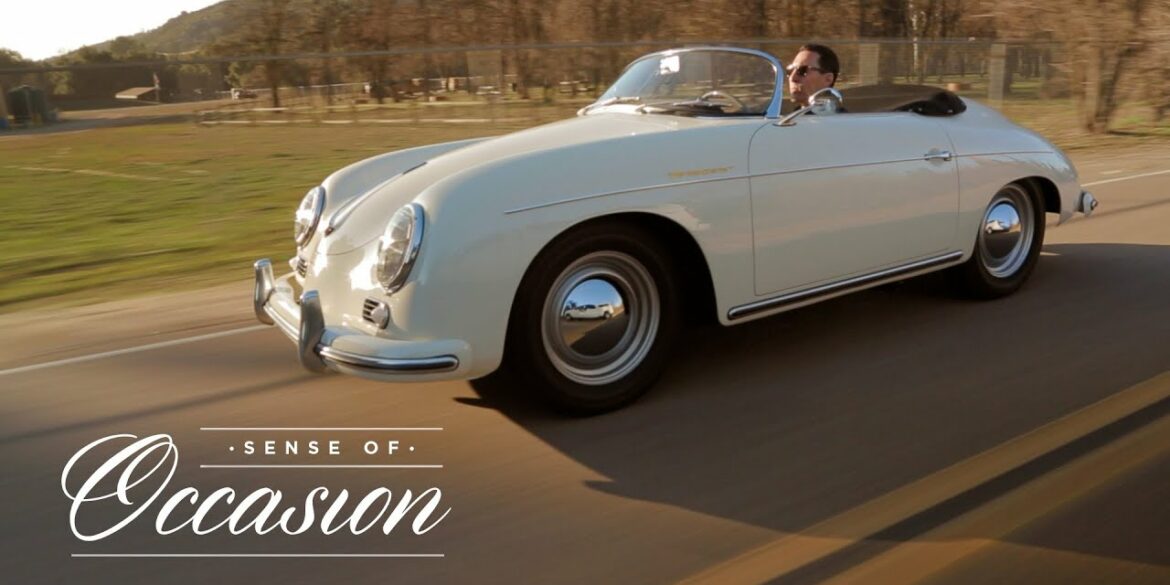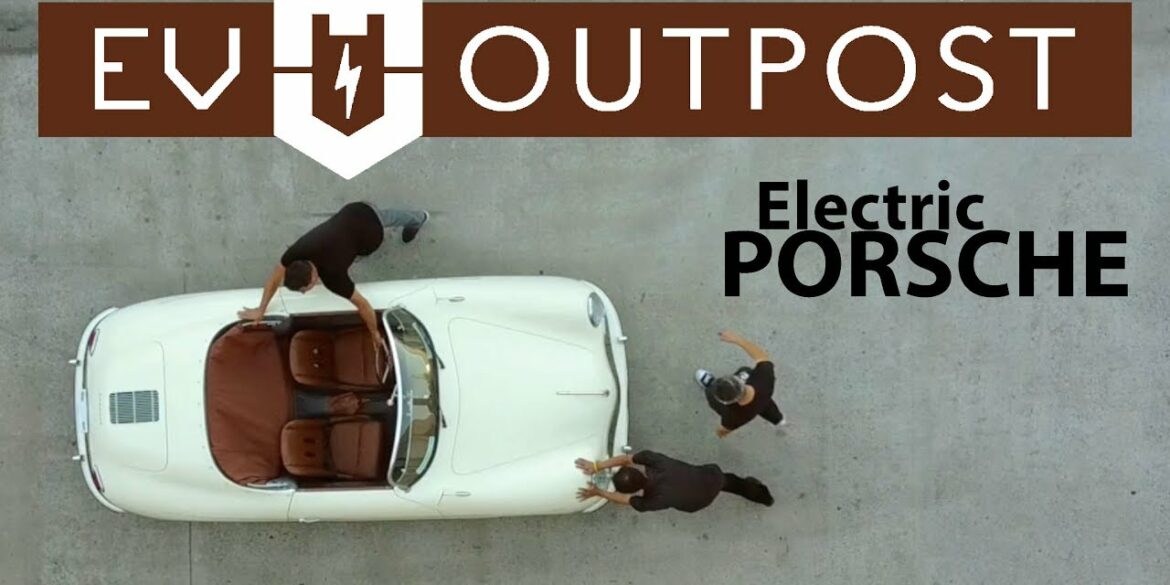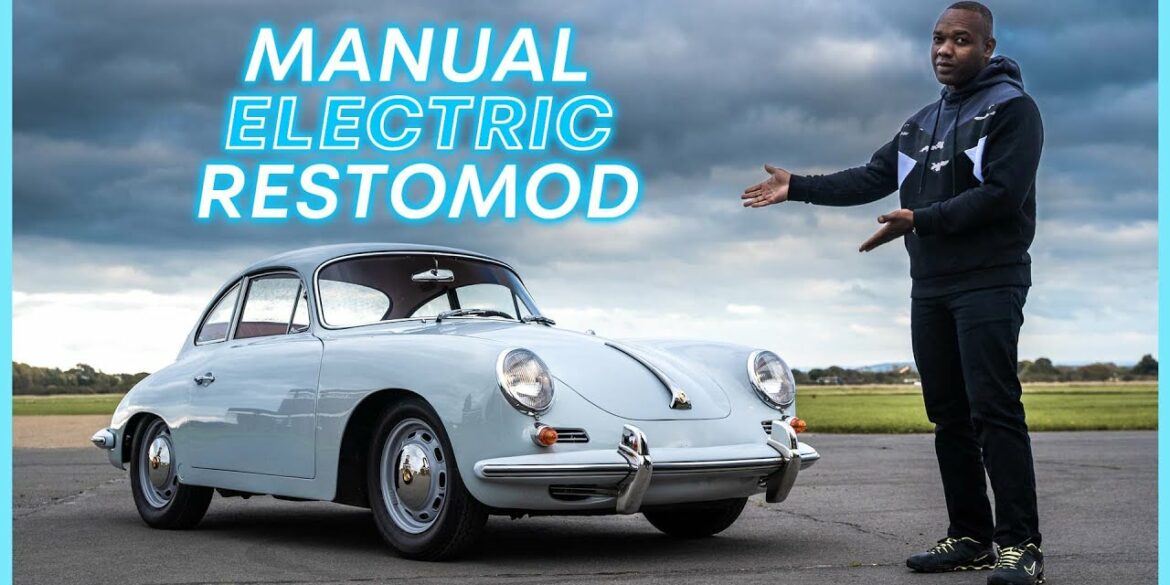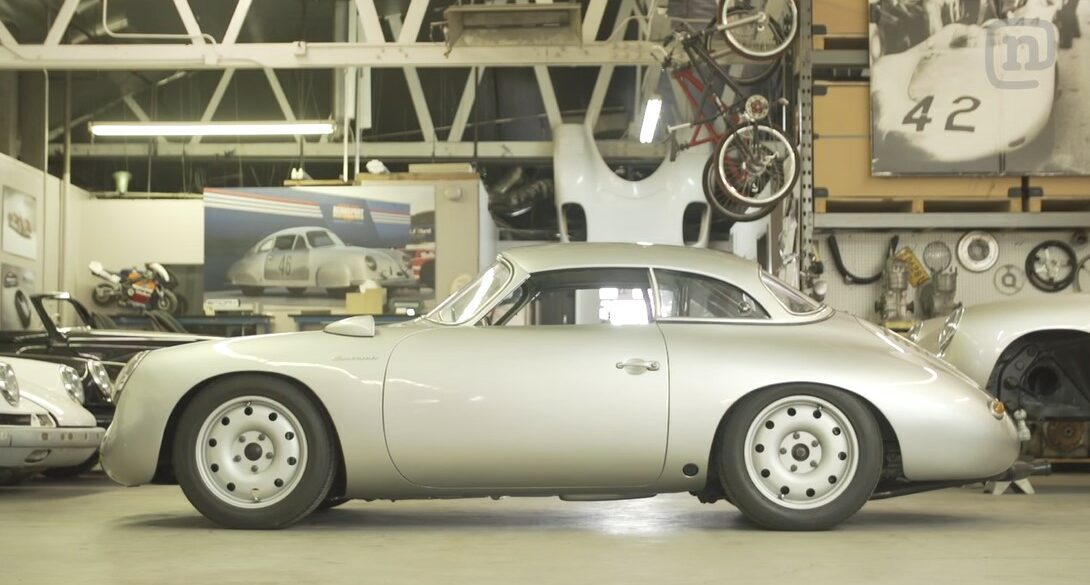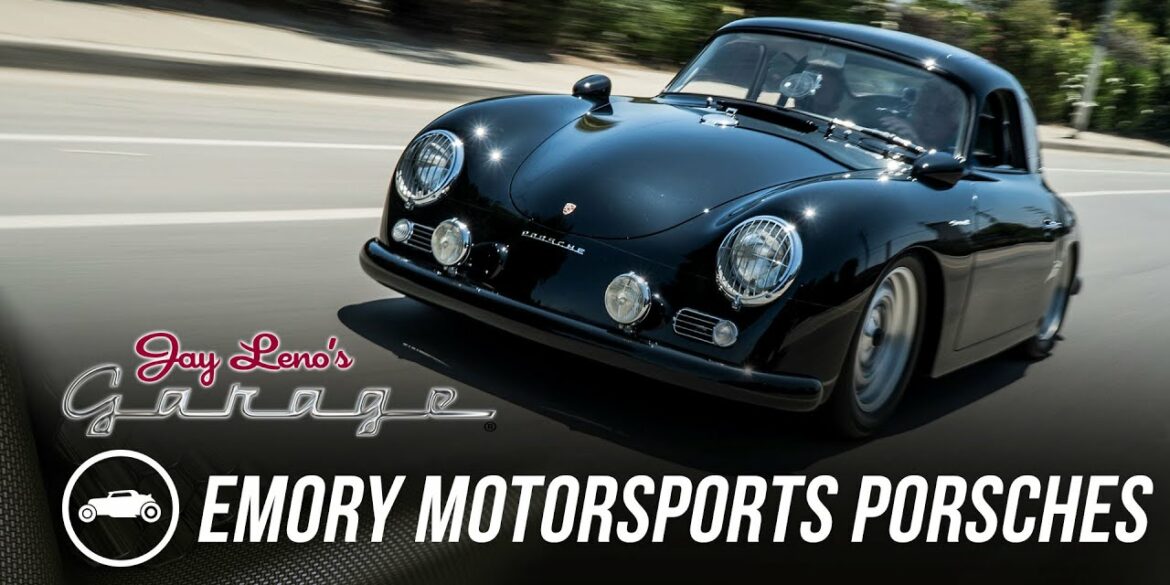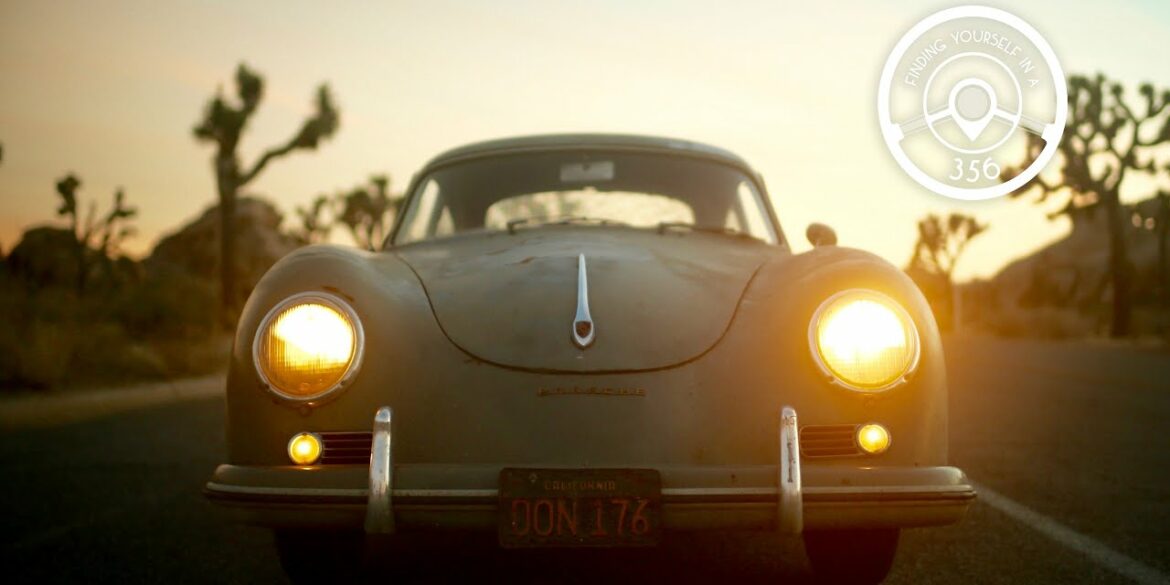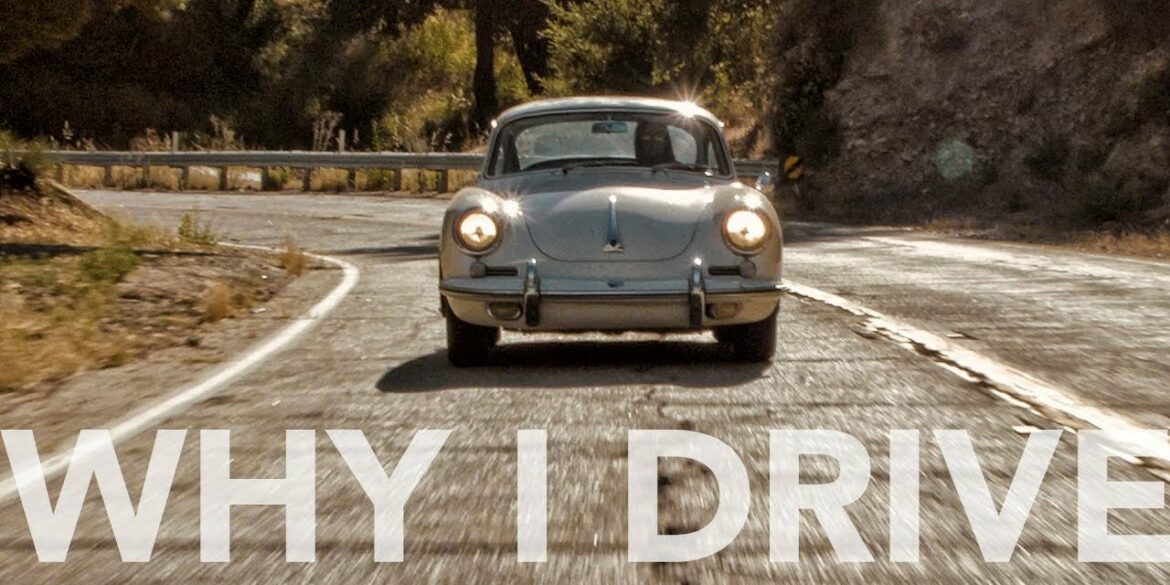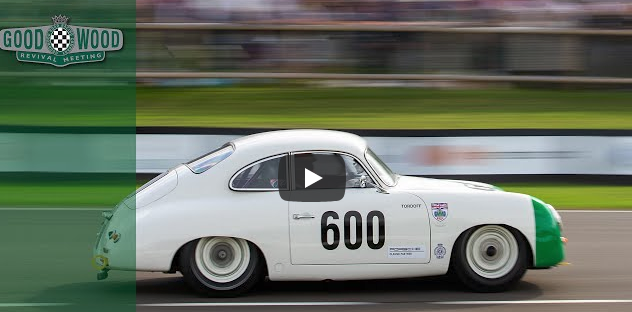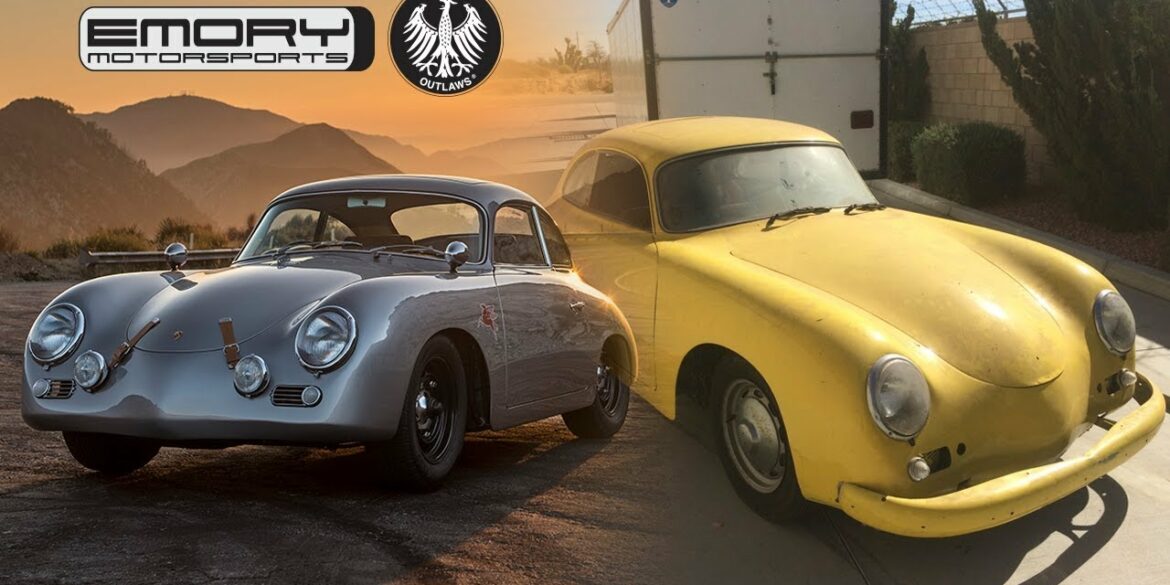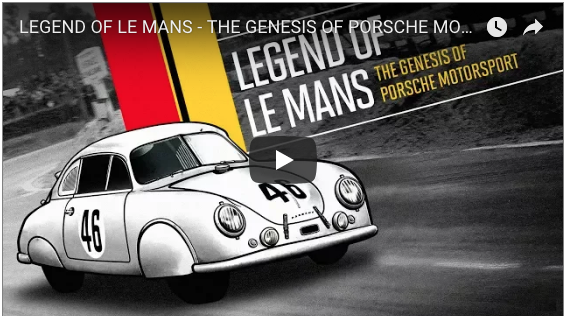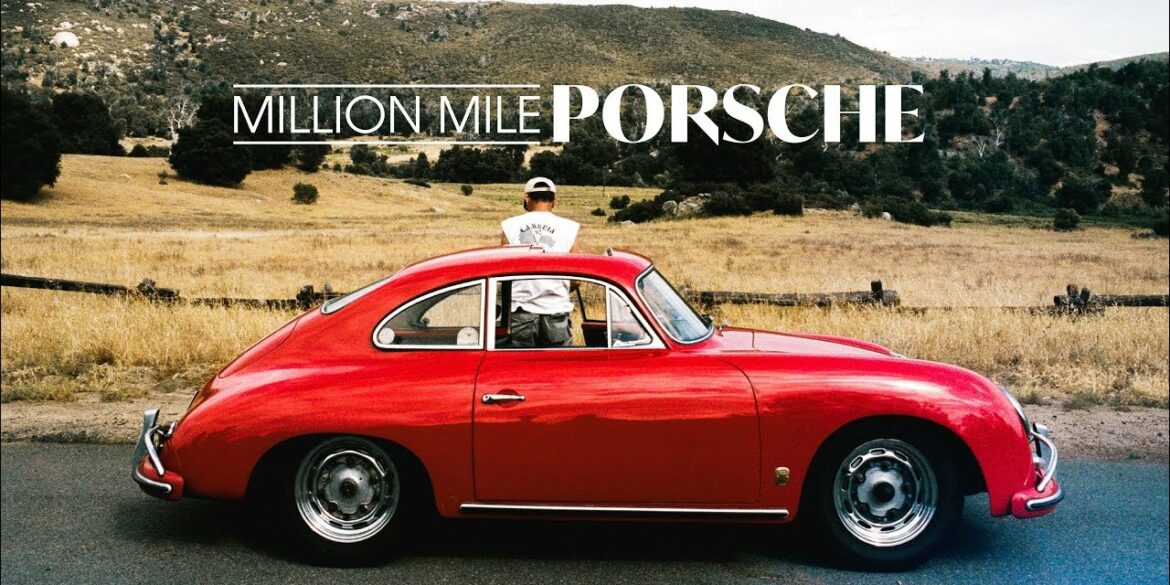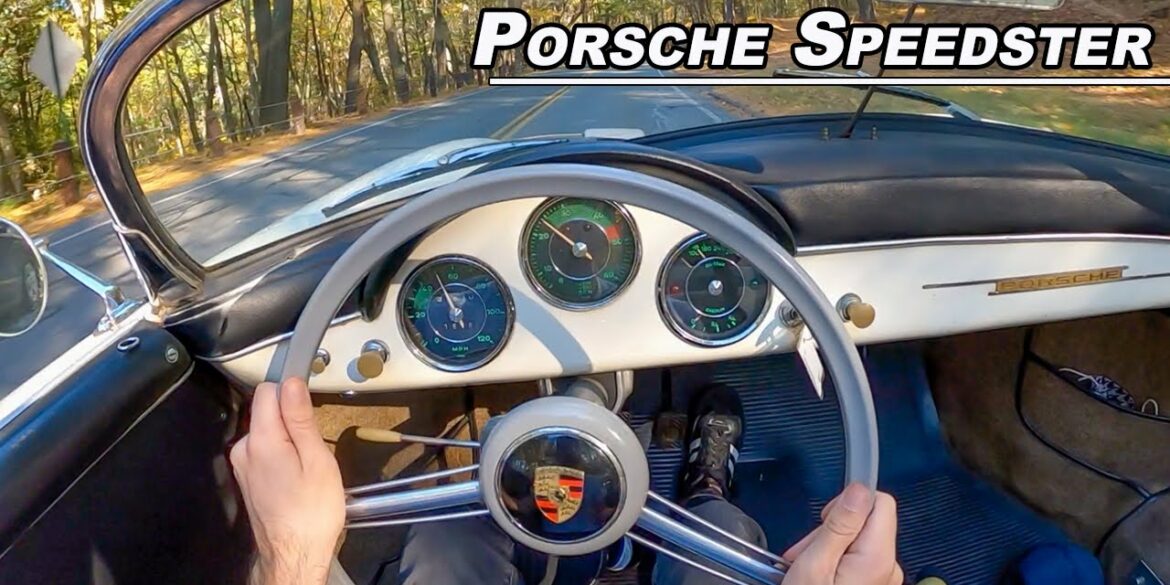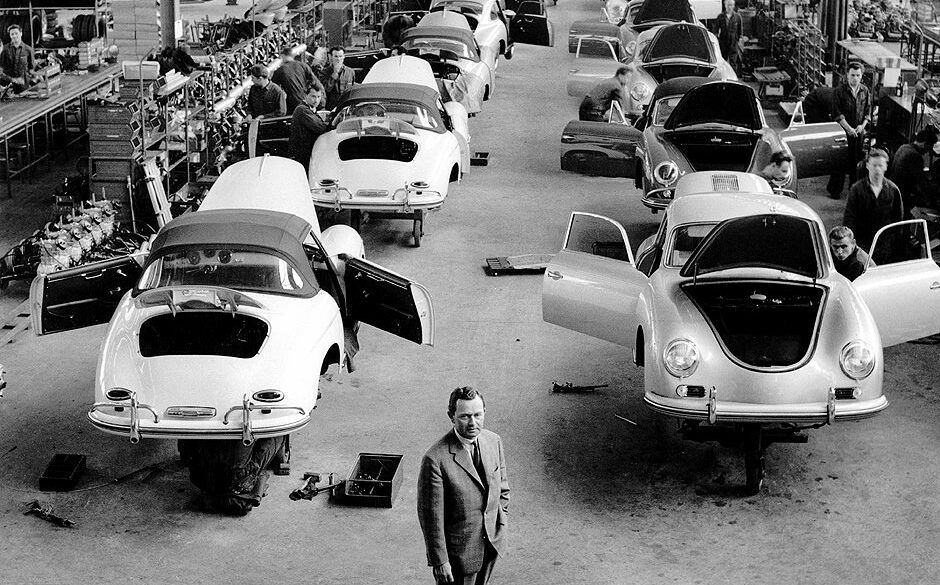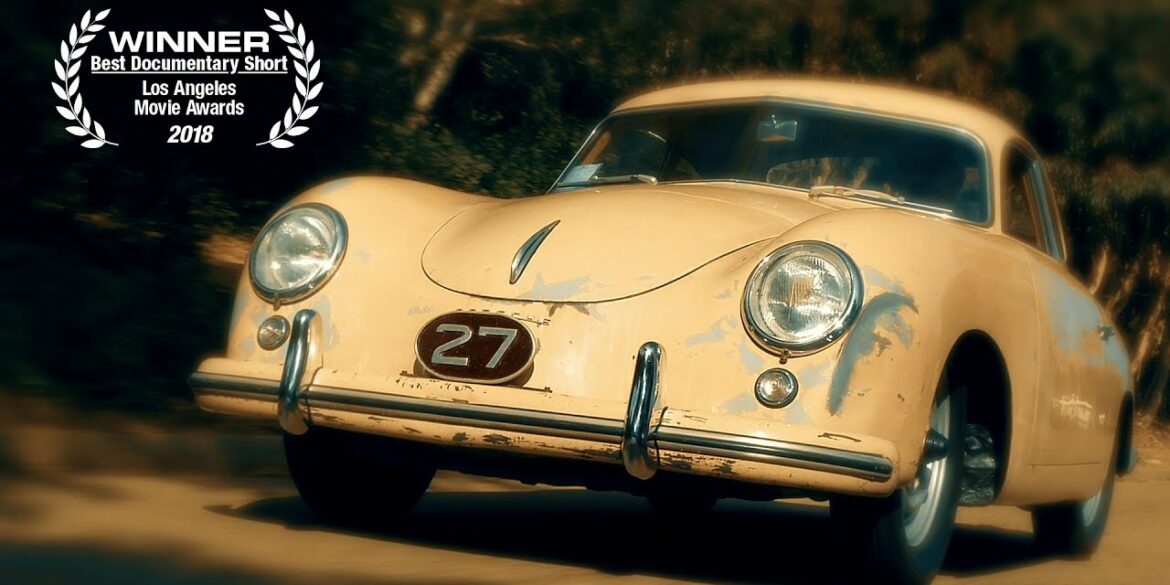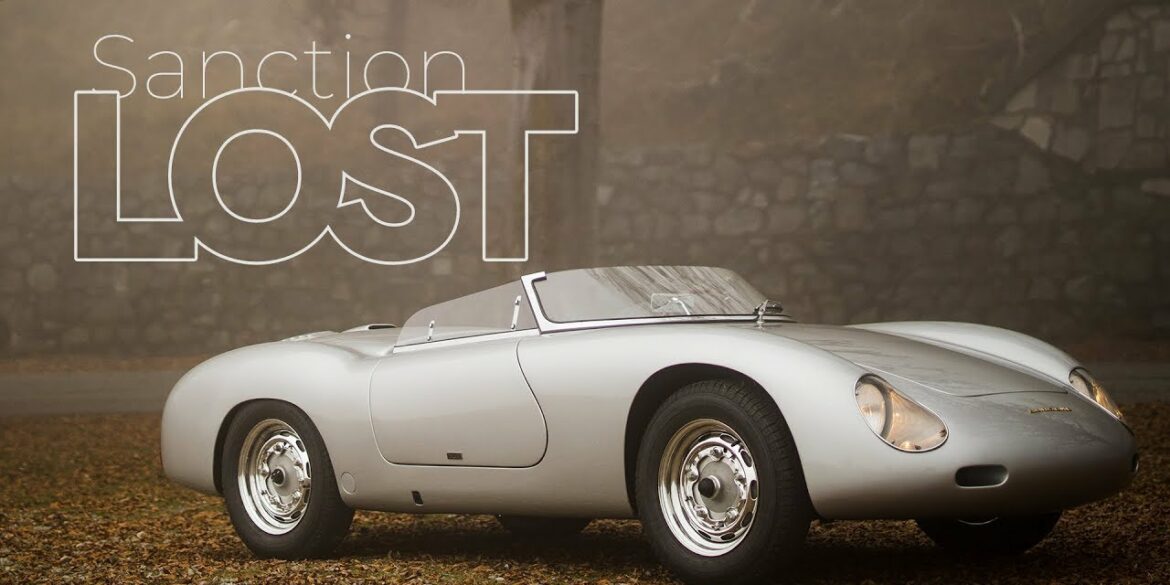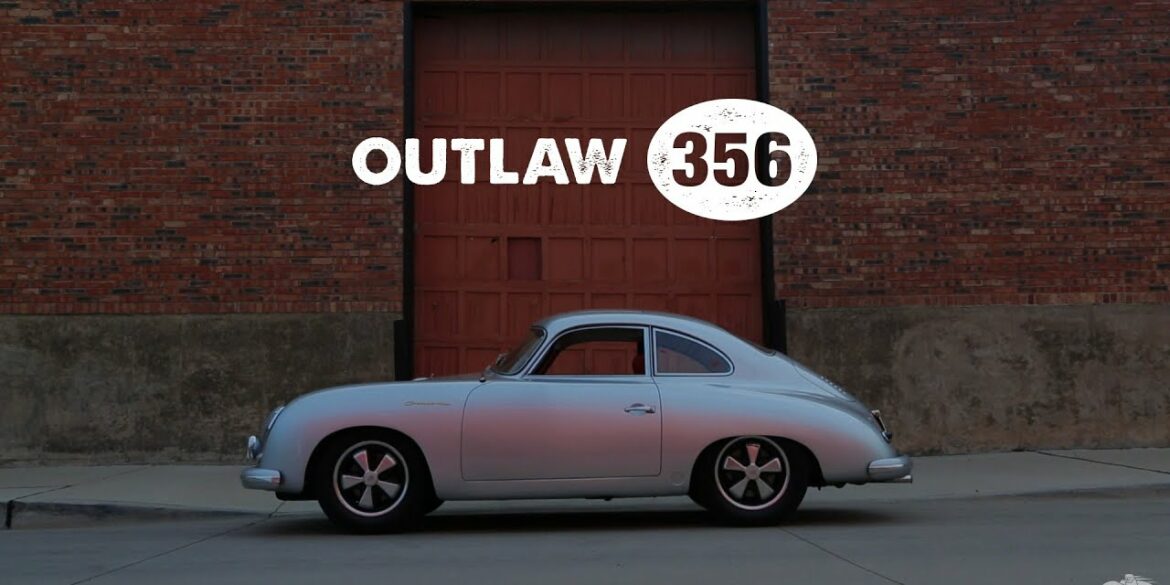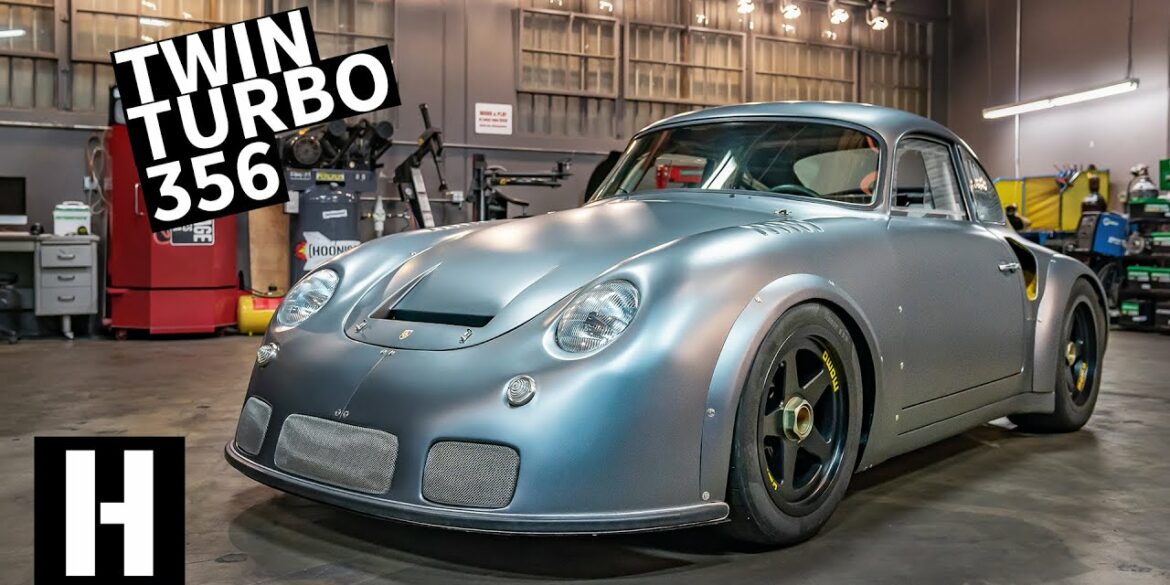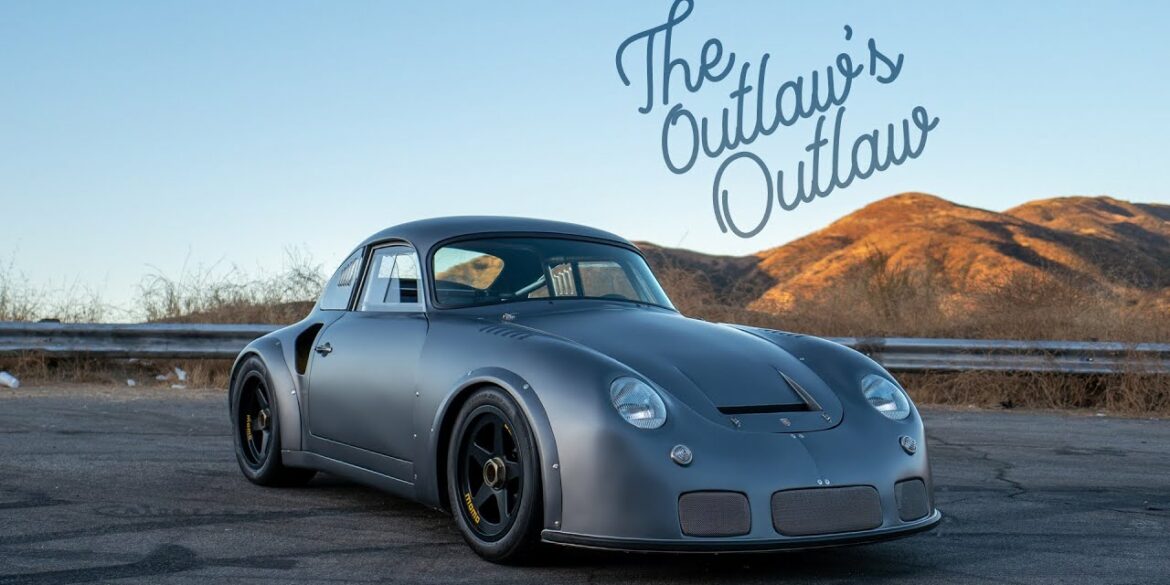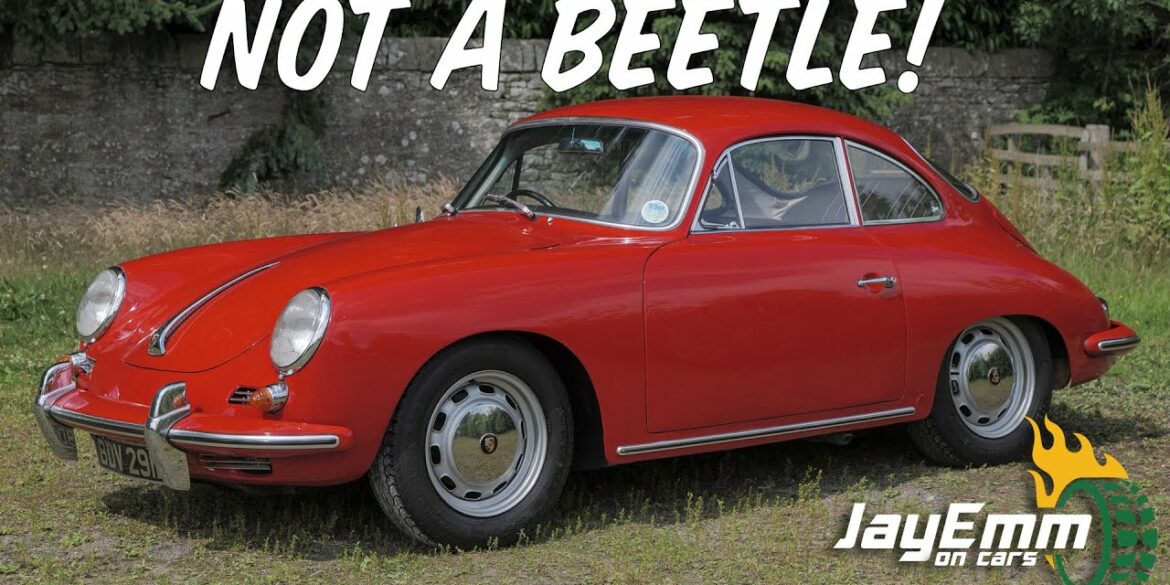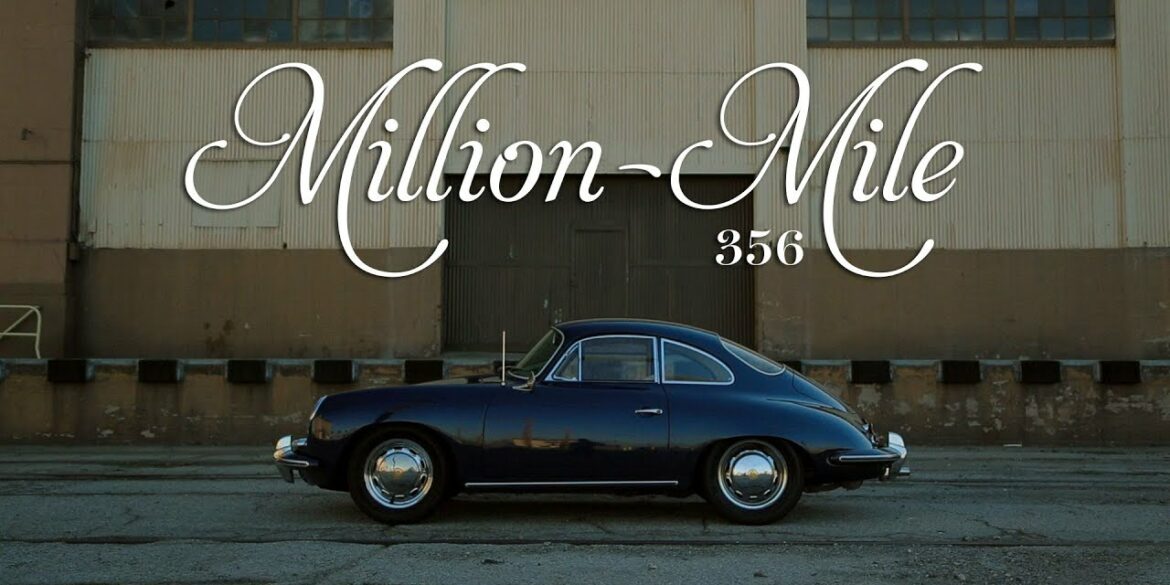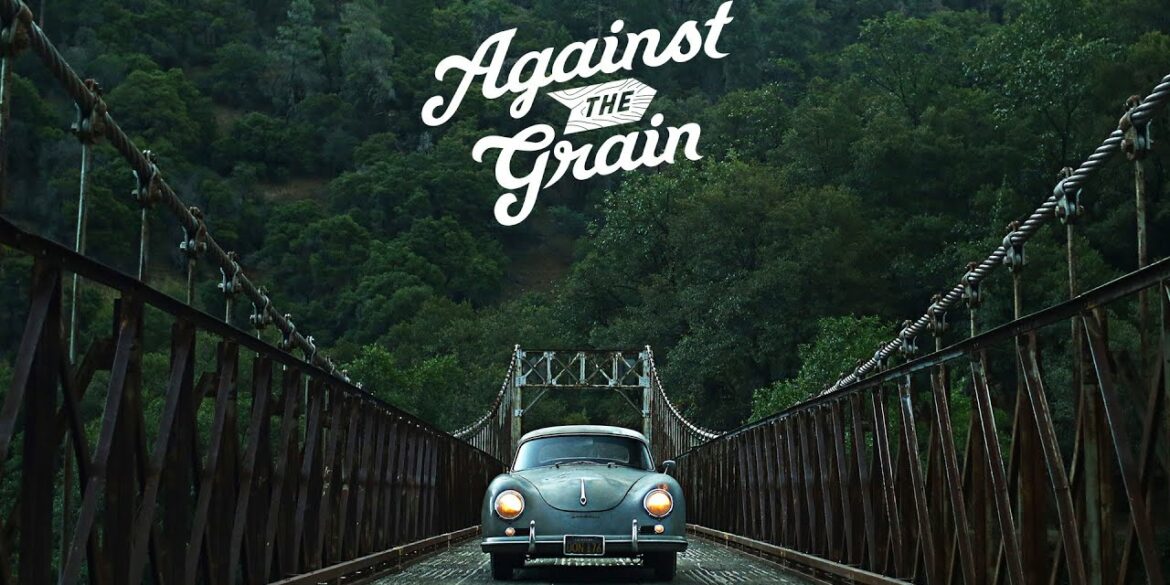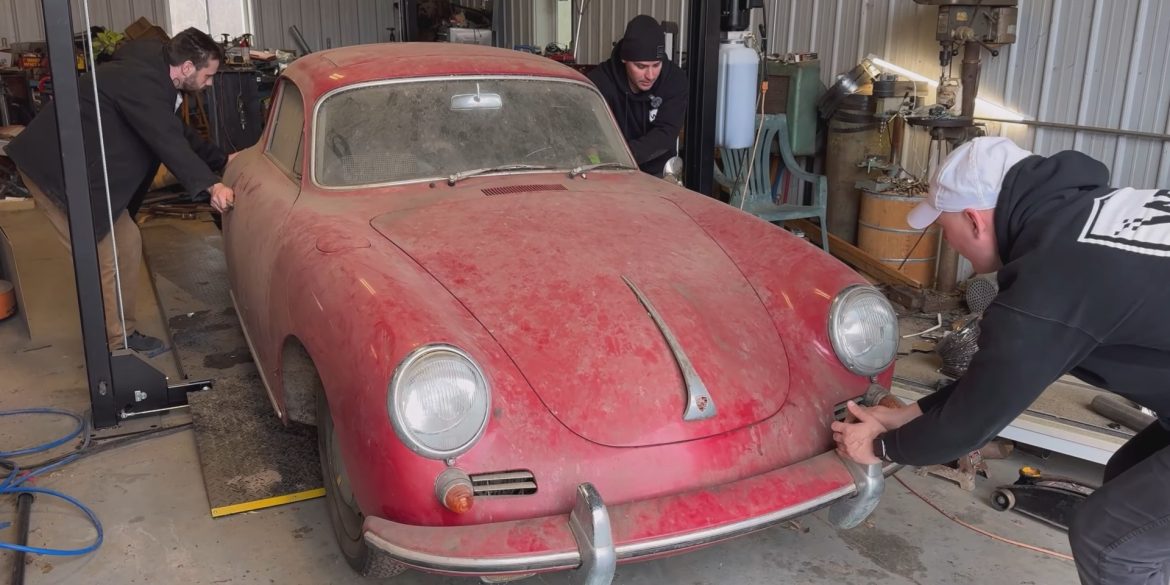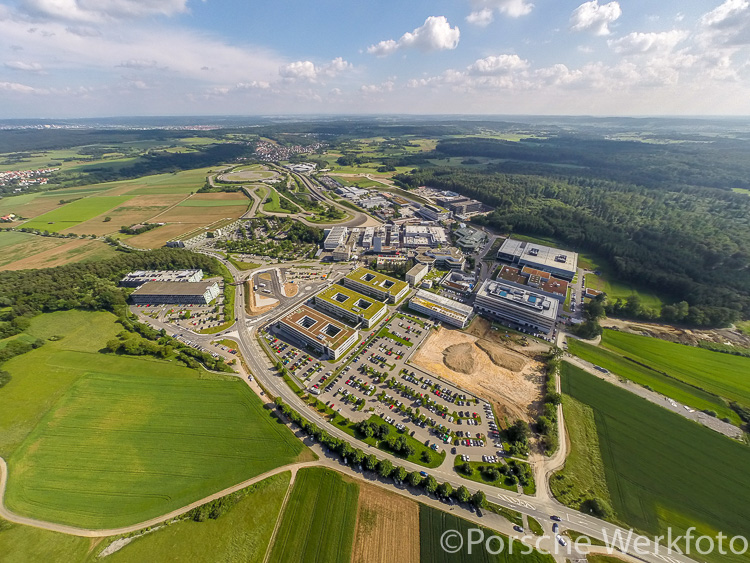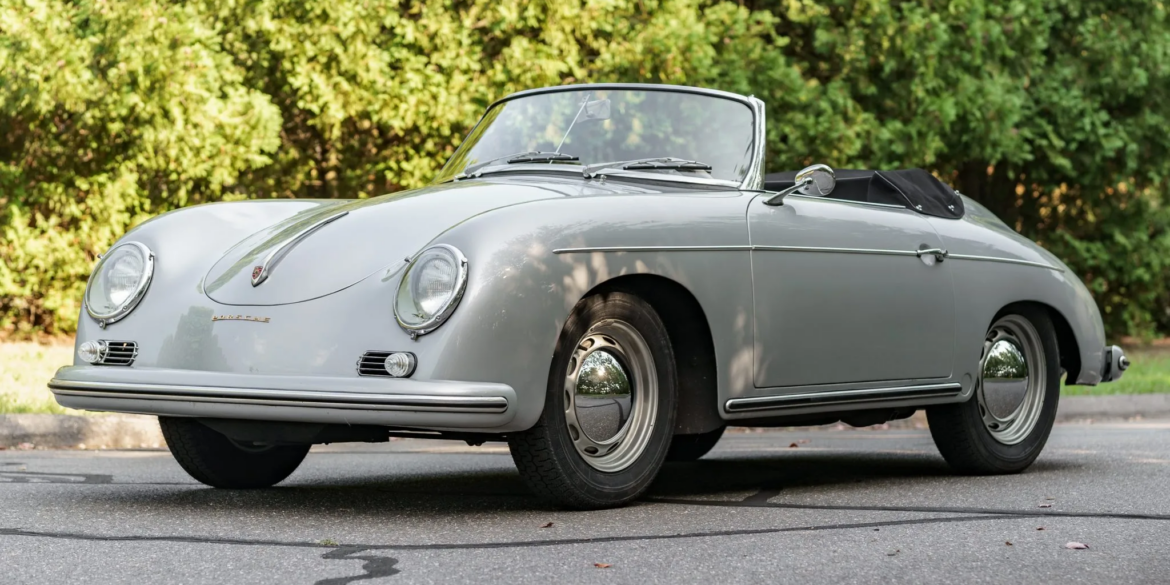Porsche 356/2 Gmünd Cabriolet Pictures Of the 50 cars made in Gmünd, only eight were built up as cabriolets. Each was outsourced for its body and interior construction with six going to Beutler who constructed them with a slightly different shape than the factory coupes. Included was a kicked-up rear...
Porsche 356
The Porsche 356 was the first production car from Porsche. Earlier cars designed by the company included Cisitalia Grand Prix race car, the Volkswagen Beetle, and Auto Union Grand Prix cars, but it was the 356 that changed things forever for sports car enthusiasts the world over. Ferdinand Porsche, Sr. founded the company that still bears his name, but it was his son Ferdinand, widely known as Ferry, who created the Porsche we know today. In the early years after WWII, the 356 was the car that made Porsche famous. See our Porsche 356 Research Hub
Porsche 356/2 Gmünd Cabriolet Specifications type Series Production Car production years 1948 – 1951 built at Austria production 41 price $ $ 3,750 engine Type 369 Flat-4 position Rear, Longitudinal valvetrain Pushrod OHV fuel feed Dual Solex 26 VFJ Downdraft displacement 1086 cc / 66.27 in³ compression 6.5:1 power 29.8...
Porsche 356/2 Gmünd Coupé Pictures The rare 356/2 aluminum bodied Porsche Gmünd Coupes are some of the most stunning Porsche case ever made. There was a total production of 52 units built in Gmund, with an additional 11 bodies created later for competition cars....
No Subscription? You’re missing out Get immediate ad-free access to all our premium content. Get Started Already a Member? Sign in to your account here....
A handful of push-rod 356As were delivered from the factory with a lightweight package that was usually reserved for the Carrera race cars. Called GTs, these got the stripped out interior, aluminum doors, a large fuel tank and Porsche ATE disc brakes. As few as four Speedsters came equipped this way. Since the four-cam was only a marginal improvement in power, the regular 1600 Super was more than enough for the small car.
1958 – 1959 Porsche 356A/1600 Super GT Speedster Pictures & Gallery...
Around 20 Super 90 Coupes were ordered with the lightweight GT package for racing. They used aluminum panels, a lightweight interior and plexiglas windows to shed over 200 lbs off the standard production coupe. Inside the car came equipped with a roll bar, leather-strap window lifts and speedster seats. Aluminum exterior panels included the doors, hood, rear deck lid.
This 356B Carrera GT is a superb representative of the early Carrera legend and the sole known survivor of only three right-hand drive T5 Carrera GTs. Benefitting from a newly-built pushrod race engine in addition to an incredibly rare Fuhrmann-designed Porsche 4-cam, she is suitable for racing or the road...
In keeping with FIA regulations, Porsche created a new lightweight 356 with help from Abarth. After Porsche had considered numerous Italian companies to manufacture a lightweight 356 body, they settled on Abarth. Franco Scaglione penned the first initial drawings which attempted to reduce frontal area, overall height. Included was an adjustable scoop on the rear deck lid. Made entirely of aluminum, Abarth's body was smaller than the Reutter 356.
1960 – 1961 Porsche Abarth 356B Carrera GTL Pictures & Gallery...
No Subscription? You’re missing out Get immediate ad-free access to all our premium content. Get Started Already a Member? Sign in to your account here....
1962 – 1963 Porsche 356B/2000GS Carrera GT Pictures & Gallery ...
1964 Porsche 356C/2000GS Carrera 2 Pictures & Gallery...
No Subscription? You’re missing out Get immediate ad-free access to all our premium content. Get Started Already a Member? Sign in to your account here....
1964 – 1965 Porsche 356 C 1600C Cabriolet Pictures & Gallery...
1964 – 1965 Porsche 356 C 1600C Coupe Pictures & Gallery...
No Subscription? You’re missing out Get immediate ad-free access to all our premium content. Get Started Already a Member? Sign in to your account here....
People usually recall the Chevrolet Corvair as the car that was “unsafe at any speed” which is rather unfair because the Corvair itself occupied barely a chapter in Ralph Nader’s infamous book. Indeed, amongst others, the VW Beetle also received a pasting—and Mr. Nader thought the VW Microbus was too...
Hans Herrmann at the Retro Classics in Stuttgart, Germany 2010 Hans Herrmann, one of the most successful and popular racing drivers to join the Porsche AG works team, celebrates his 90th birthday this year on February 23. The endurance and Monoposto specialist, born in Stuttgart in 1928, is regarded as...
The man behind this 356 limousine is John Dixon who decided to create a personalized Porsche-based limousine for his daughter’s wedding. With the expertise of Don Boeke, known as “the Egyptian” at his Dayton, Ohio customizing shop, the unique 356 limousine took shape. Constructed from multiple stripped 356s, this...
The Porsche 356 was the first production car from Porsche. Earlier cars designed by the company included Cisitalia Grand Prix race car, the Volkswagen Beetle, and Auto Union Grand Prix cars, but it was the 356 that changed things forever for sports car enthusiasts the world over. Ferdinand Porsche, Sr....
This immaculate auto is in the collection of Brescia Classic Cars in Italy. It’s #48 of only 200 similar cars built by Porsche in 1954. Part of the “Pre-A” production of Porsche 356 cars produced from 1948 to 1955, the first Speedster powerplants were 1100 cc, increased to 1500 cc...
Designed by Ferry Porsche, the 356 was based on the Volkswagen created by his father, Ferdinand Porsche. Like the ‘Beetle’, the 356 used a platform chassis with a rear-mounted air-cooled engine and torsion bar independent suspension. The 356 saw constant development, with its engine growing to 1.3 and then 1.5...
Introduced in late 1954, the Porsche 356 A Speedster continued as a stripped-down, affordable, sports-oriented convertible within the 356 A generation. Featuring a removable cut-down windshield, a lightweight detachable top, and side curtains instead of roll-up windows found in the 356 A Cabriolet, the Speedster embodied simplicity. Initially powered by...
The Porsche 356, designed by Ferry Porsche, was based on the Volkswagen his father created, featuring a platform chassis, rear-mounted air-cooled engine, and torsion bar independent suspension. Shortly after the release of the original 356 coupe, a cabriolet followed. In 1952, Porsche produced 15 roadsters at the suggestion of US...
Emory Motorsports is a company that makes the best Porsche “Outlaw” cars. The attention to detail is stunning and there are few more beautiful machines to exist. This particular model based on a 1959 Porsche 356A is no exception to Emory Motorsports’ reputation. It’s immaculate and absolutely gorgeous. The car...
For decades, Porsche has established itself as a renowned car manufacturer, celebrated for its adaptability and agility. It has consistently catered to the desires of racing enthusiasts and discerning clients by creating special versions of their beloved cars. During the early 1960s, the 356s were no exception to this tradition....
West Coast Customs has dramatically transformed this Porsche into a fusion of contemporary performance and the timeless body style of a 356. Using a 2008 Porsche Cayman as the base, the project involved removing a 9-inch section from the chassis to accommodate the shorter-wheelbase 356 Coupe body. The original Cayman...
It’s really hard not to love this Porsche 356 A Carrera Speedster! Photo Credit: Ted7 (@iamted7)...
Successful VW Dealer and racer Walter Glöckler built several specials for the German Car Championship including this roadster. It was built with assistance from Porsche in Zuffenhausen and raced without its optional hardtop in the 1952 champion before being shipped overseas for SCCA racing. Weidenhausen created the body from aluminum with a nose that bore close resemblance to the 356 Porsche but had semi-skirted rear wheels and cutaway rear corners similar to Glockler-Porsche 1 and 2.
1952 Porsche-Glöckler 356 Roadster Pictures & Gallery...
Porsche: The Carrera Dynasty by Glen Smale © Glen Smale A Spanish noun, ‘carrera’ can mean road, track or race and since the 1970s ‘Carrera’ has been a model name synonymous with Porsche. In fact, and as the author explains, Porsche had been using the name ‘Carrera’ since 1954 to...
Sorry, but you do not have permission to view this content....
Invitation to race from Charles Faroux Charles Faroux was a car enthusiast, a racing official, a leading French motor-publication editor at La Vie Automobile and a charmer. Europe’s major automobile manufacturers entrusted their engineering secrets and newest models to him in hopes of a favorable review. Everyone respected his opinions....
Sorry, but you do not have permission to view this content....
In discussions about vintage Porsches, the iconic 356 always comes to light as the cornerstone of air-cooled Porsches. Respected for its simple but effective design over a decade-long production span, its balance and agility redefined small displacement sports cars of the 1950s through 1965. Offering accommodation for two passengers and...
For some, motor racing is an inevitability. It is a passion that they are born with and it is just a matter of time before they slip behind the wheel of a racing car. For these chosen few, this inborn factor elevates them to a level above the rest of...
Racing Porsche with Style © Stéphane Coradi This is Stéphane Coradi’s third publication, and the third of his books that I am reviewing. It must be said that Stéphane’s enthusiasm for his work is so irrepressible, it’s contagious. But that is refreshing, because he really encourages the contributors to show...
PCarMarket is currently offering a 1960 Porsche 356B Sunroof Coupe that has been restored by its previous owner before it was bought by its current owner. It also got an engine rebuild in 2020 by Heritage Motorcar Research Inc. The car is finished in Silver Metallic and sports an optional...
1957 Porsche 356 A Speedster – looking chocolate box pretty! It was Max Hoffman, the New York-based Porsche importer, who was instrumental in getting the factory to produce a lightweight sports car for local competition in the USA. Hoffman’s clients were demanding a stripped-down factory version of the 356 to...
SportErfolge: by Tony Adriaensens – page photographs by © Virtual Motorpix/Glen Smale Simply titled, SportErfolge (English: Success in Sport), this book came my way quite by surprise. It is not a book I knew anything about until I spotted it on the internet, and decided to look for a copy....
Let’s face it, the Porsche 911 was the most successful model produced by Porsche in the 20th century, and it is only in recent years that it has started to be outsold by the Macan, the Cayenne, and the Taycan. But many who are not wise in the ways of...
Episode One: The Porsche 356 Summary Welcome to The Audiobahn, the Stuttcars.com podcast focused on all things Porsche. In our first series, we’re exploring the history of venerable 911: its history, origins, achievements, and future. In our first-ever Audiobahn episode, we’re starting with where the 911 began: the Porsche 356. Read...
Episode Two: The Porsche 901/912 Summary Welcome to The Audiobahn, the Stuttcars.com podcast focused on all things Porsche. In our first series, we’re exploring the history of venerable 911: its history, origins, achievements, and future. Audiobahn Episode Two is all about the Porsche 901/912, the car unveiled in 1963 at the...
Shifting the Recipe a Bit Rod Emory of Emory Motorsports has revealed the 1959½ Speedster. It’s the latest evolution of the company’s vision for its Outlaw 356 Porsches. The Transitional Speedster you see here came to be from a 356 coupe that had sustained significant roof damage. The roof was...
Molly ready for the Peking to Paris rally in 2007 © David & Julie Harrison She was manufactured in 1958, and much of her early life is unrecorded. But in 2004, a customer of Gantspeed Engineering, Lincolnshire, England, asked the workshop’s owner, Robert Gant, to find him a right-hand drive...
Did you know that 2023 sees the Porsche 356 C turning 60? We think it’s a birthday still worth celebrating, even in a year with so much else going on in it. This fine example has been living in a garage in Bielefeld for more than half its life and...
The Ultimate Book of the Porsche 356 by Brian Long © Veloce Publishing Limited Brian Long’s original book on the Porsche 356 was published in 1996, and this was later printed in softback form. A few years later a revised version of this book was published which included more colour...
Germany? Austria? Japan? To understand where ground zero is for the world’s largest 356-only Concours, let’s first go back to the 1960s and 1970s before Porsche had developed their markets in Asia and the Middle East. At one point, approximately 50% of all production was sold to the United States....
Emory Motorsports stands as the global benchmark for creating bespoke Porsche 356 vehicles, melding the essence of the Porsche brand with Rod Emory’s distinctive vision for its most iconic models. Renowned for their unparalleled craftsmanship, Emory Motorsports produces the most exceptional, meticulously crafted 356 custom cars in the world. Going...
A True Porsche Specimen The Porsche 356A Speedster is a beautiful car and an important part of Porsche’s long motoring history. There’s a 1958 version of the car for sale at Bring A Trailer right now. The current bid is at $205,000 and the auction ends in seven days. If...
A Beautiful Example With a Red Interior The Porsche 356B Coupe is a car that stands out in many people’s minds as an iconic Porsche model. It’s one that is easy to love and they’re not wildly expensive as far as collector cars go. Really good ones can reach well...
The Porsche 356A Speedster is a beautiful car and an important part of Porsche’s long motoring history. There’s a 1958 version of the car for sale at Bring A Trailer right now. This Porsche has remained under the ownership of a single family from 1967 to 2022 and joined the 1987 La Carrera...
One of the Best ‘Outlaws’ on the Planet Emory Motorsports is a company that makes the best Porsche “Outlaw” cars. The attention to detail is stunning and there are few more beautiful machines to exist. Now there is a 1959 Porsche 356A sunroof coupe for sale on Bring a Trailer....
Want to Join the Outlaw Gang? Rod Emory makes some of the most insane modified Porsches out there. This Porsche MOMO 356 RSR Outlaw built by Rod Emory is currently for sale and it’s an absolutely beautiful car unlike any other on the road. This car debuted in 2019 at...
Porsche Racing Royalty Jay meets Rod Emory of Emory Motorsports to hear the story of the restorations of this remarkable racer hailing from the dawn of Porsche’s motorsports tradition....
1956 Porsche 356A is a “Sunroof Coupe” This 1956 Porsche 356A is a “Sunroof Coupe” that has been owned by the current owner since 1990. It is powered by the original 1600CC engine making approximately 85 horsepower and, as a restored driver example, is a delight to wheel around....
1957 Porsche 356A Outlaw Chuck Olenyk turned this coulda-been shoulda-been coupe into a classic speedster with all factory parts – by himself in his home garage!...
POV Drive In An 1800cc Twin Plug 356A Speedster Sit back, turn up the volume and enjoy...
Four-Cam Coupe Porsche 356 Carrera GS/GT Driven The Porsche 356 brought the automaker into a new era. The model started the trajectory that would eventually lead to the venerable 911, and prototype versions of the car earned Porsche its first major achievements in endurance racing—namely a class win at the...
The Auratium Green 356 A Type 2 Please turn on Closed Captions to enjoy this film in English. This is the story of following a trail of gas into the a tractor barn. It is a story of a family legacy of mechanical inclination and a desire to learn from...
A Drive In the Emory Outlaw Roadster This 1960 Porsche 356 Roadster is a rather unique example of the Emory Outlaw essence. It features a 205-hp, 2,650 cc FAT 914 engine, 911 rear suspension, 911 5-speed transmission, aluminum hood, tonneau cover & headrest fairing and a Speedster windshield. There are many...
1963 Porsche 356 Carrera 2. When Jay was lucky enough to acquire what he calls “one of the most beautiful driving cars of all time,” he tracked down its former owner and restorer John Willhoit, who revisits the car for the first time since 1977....
Slate Grey Porsche 356 Dr. Anand Rajani takes Jay through his beloved Porsche, restored by an old friend of Big Dog Garage, John Willhoit....
A father/son project gets driven This is a fully restored 1965 Porsche 356C, the final year of the 356. A father/son project, it features a punched-out 1780cc engine, mild outlaw body work, and a rally-inspired interior with fresh hides and rare vintage Tag Heuer rally clocks. Though it’s incredibly slow,...
Join Road Scholars’ Cam Ingram and Udo Reisinger as they take the 1958 Porsche 356A Coupe on its final post restoration test drive....
8 minutes of Porsche 356 goodness British Touring Car runner-up Sam Tordoff had quite the time in the Fordwater Trophy at Goodwood Revival 2018. After grabbing a pole from Darren Turner’s Aston Martin DB2, Tordoff’s Porsche 356 stalled when the flag dropped. The ensuing drive was absolutely scintillating: enjoy eight...
Join Tedward as he gives the features of the 1957 Porsche 356 Speedster, and take out this very beautiful car out for a drive....
A Drive In A 1956 Porsche 356A T1 Speedster Starting any classic car is special. There is the sensation that something distinct and superior is taking place because of the rituals observed and details you notice. On this 1956 Porsche 356A T1 Speedster for example the windscreen is removable, the...
How to Convert a Classic into An Electric Car...
Electric Porsche 356 Review: An EV For Petrolheads! The Electrogenic 356 is no ordinary Porsche restomod. This one might look like the original, but there is one big change: it’s been electrified. Now, in most cases, electrification is carried out in order to improve efficiency, but in the case of...
Chris Forsberg from Garage Tours goes to Los Angeles to see the stunning and impressive work that Emory Motorsports are doing with their vintage Porsches, specially their Porsche 356s....
The Outlaws Third generation SoCal gearhead Rod Emory takes Jay through his 1958 Emory Special and 1959 Emory Outlaw....
A Drive In An Emory Outlaw 356 Third generation SoCal gearhead Rod Emory takes Jay through his 1958 Emory Special and 1959 Emory Outlaw....
1956 Porsche 356 C Matt Hummel’s love for vintage automobiles has led him to many interesting places, but no car has captured his imagination quite like his 1956 Porsche 356. Follow along as Matt attempts his most ambition adventure, going 20-miles off-road from Joshua Tree to Big Bear in a...
We Love This 1964 Porsche 356 Why does Catherine Sutton drive? Because looking after her car is a choice, not a chore. She presides over her 1964 Porsche 356 with its wrinkles and patina as if it were a loved one, carefully operating the clockwork of its clutch and accelerator,...
Video featuring Tordoff’s impressive run from last to 2nd in his Porsche 356 in the Fordwater Trophy at the Goodwood Revival 2018 No Subscription? You’re missing out Get immediate ad-free access to all our premium content. Get Started Already a Member? Sign in to your account here....
How we made the 1959 Emory Outlaw RHD Coupe in GT Silver How we made the 1959 Emory Outlaw RHD Coupe in GT Silver. This is the inaugural installment of a class of videos we call “walk arounds” to give our friends and fans an inside look at how we do...
THE GENESIS OF PORSCHE MOTORSPORT…watch the restoration by Rod Emory of the #46 Porsche 356 SL that won its class at the 1951 Le Mans 24 Hours, captured in this super video by Rennfilms No Subscription? You’re missing out Get immediate ad-free access to all our premium content. Get Started...
This is no ordinary Porsche “I’ve had so many great times in it, all over the world. Even the Eskimos like it!” As you may have guessed, this is no ordinary Porsche; Lorenzo has owned his 356-A since he was 21, and in his over 50 years of ownership he...
POV Drive In 356A Speedster This 1956 Porsche 356A Speedster is completely original and unrestored making it incredibly rare. It has 37,800 original miles on the odometer and it’s looking for a new home....
The world of early Porsche production This footage was taken between late 1959 and late 1961. Great view into the world of early Porsche production...
1953 Porsche 356 America After decades collecting dust in a storage building in the California desert, a 1953 Porsche 356 America coupe is returned to the road and reunited with the 93-year-old original owner. 2018 Winner of the Los Angeles Movie Awards Best Documentary Short. A film by Red Guitar,...
Porsche 356 Carrera Speedster Zagato Please turn on closed captions to enjoy this film in English. Zagato is turning 100 years old this Friday, and over the course of the past century the Milanese coachbuilder has been quite prolific—Andrea Zagato, current CEO and the third generation of the family to run...
Modified his 1955 Porsche 356 Continental, Nowadays, it seems “outlaw” Porsches are everywhere and all the rage. Back in the mid-1990s, however, when Mr. Jack Griffin decided to modify his 1955 Porsche 356 Continental, he wasn’t following a customization trend or fad but, rather, taking it upon himself to build...
Barn Find Porsche Becomes A Twin Turbo Frankenstein Build How we made the 1959 Emory Outlaw RHD Coupe in GT SilverRod Emory is a legend in the Porsche game – so when he’s got a new build, you know it’s going to be worthy of an in-depth look. His 356...
They call it the 356 RSR Rod Emory’s parents brought him home from the hospital in a hot-rodded short wheelbase 911, which says all you need to know about the influence cars had in his childhood. Growing up in a household that was very well-versed in custom automobiles (especially Porsches),...
Porsche 356C Driven In today’s video, we don’t learn much – but we do get to see me go rather gooey over a 1964 Porsche 356C....
This is what it is all about It takes a lot of driving, work, and a little bit of luck to achieve nearly a million miles in one car. Guy Newmark has been driving one car for forty-five years, a beautiful blue 356, and he has no thoughts of driving...
1956 Porsche 356 C “When you’re out there in something like this, people just stop and…it might not even look like a car at first…it might look like a small spaceship floating around out there,” says Matt Hummel, adding, “this is my favorite car to get lost in”. A mis-spelled...
Porsche barn finds are some of the most exciting discoveries in the automotive world, often uncovering rare and historically significant models that have been forgotten for decades. These finds typically involve classic Porsches, such as the 356 and 911, or even rarer models, like the 550 Spyder, hidden away in...
Weissach – Porsche Werk 8 – on 9 June 2016 By the late 1950s, the German Wirtschaftswunder was well underway and as the economy grew, so traffic density increased. This was particularly noticeable around Stuttgart often making testing on local Autobahnen inconvenient and it caused Ferry to think about creating...
Produced in 1959 only, the Porsche 356 Convertible D was the replacement for the 356 A Speedster. In many ways this reflected Porsches desire to make more expensive and premium models. As a result, the $3,695 Convertible was much more expensive than the Speedster it replaced. As such the new car featured roll-up...
No More Content


